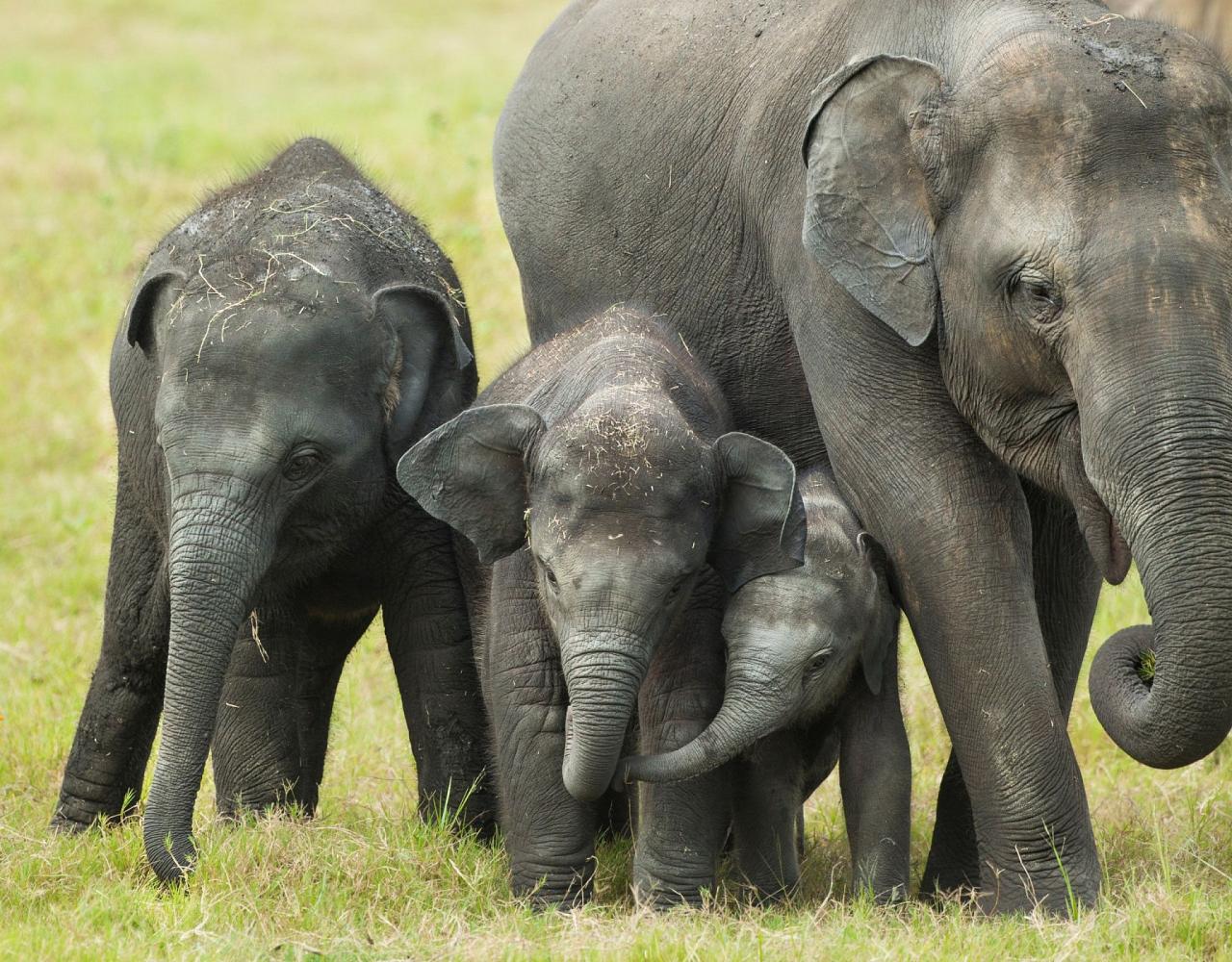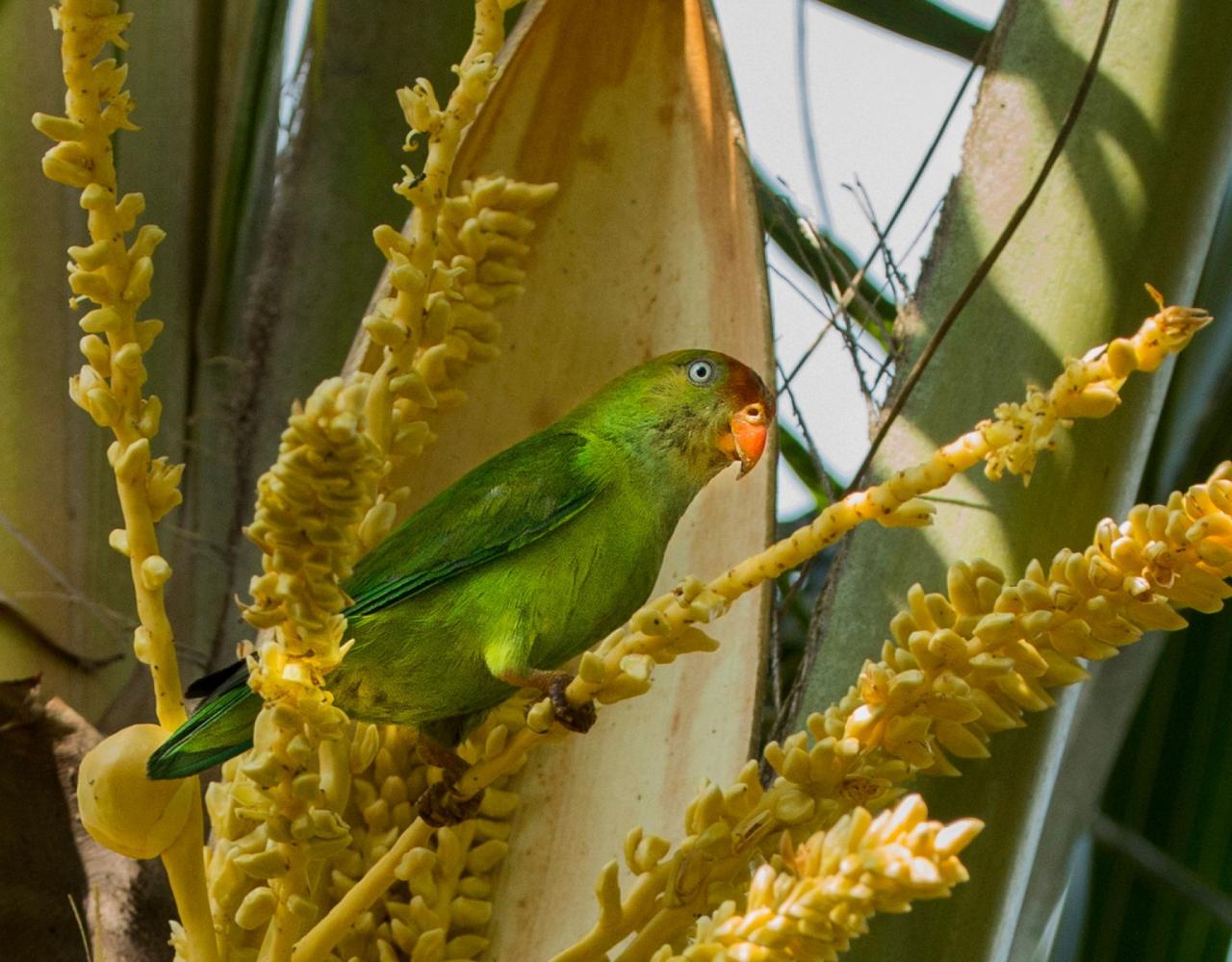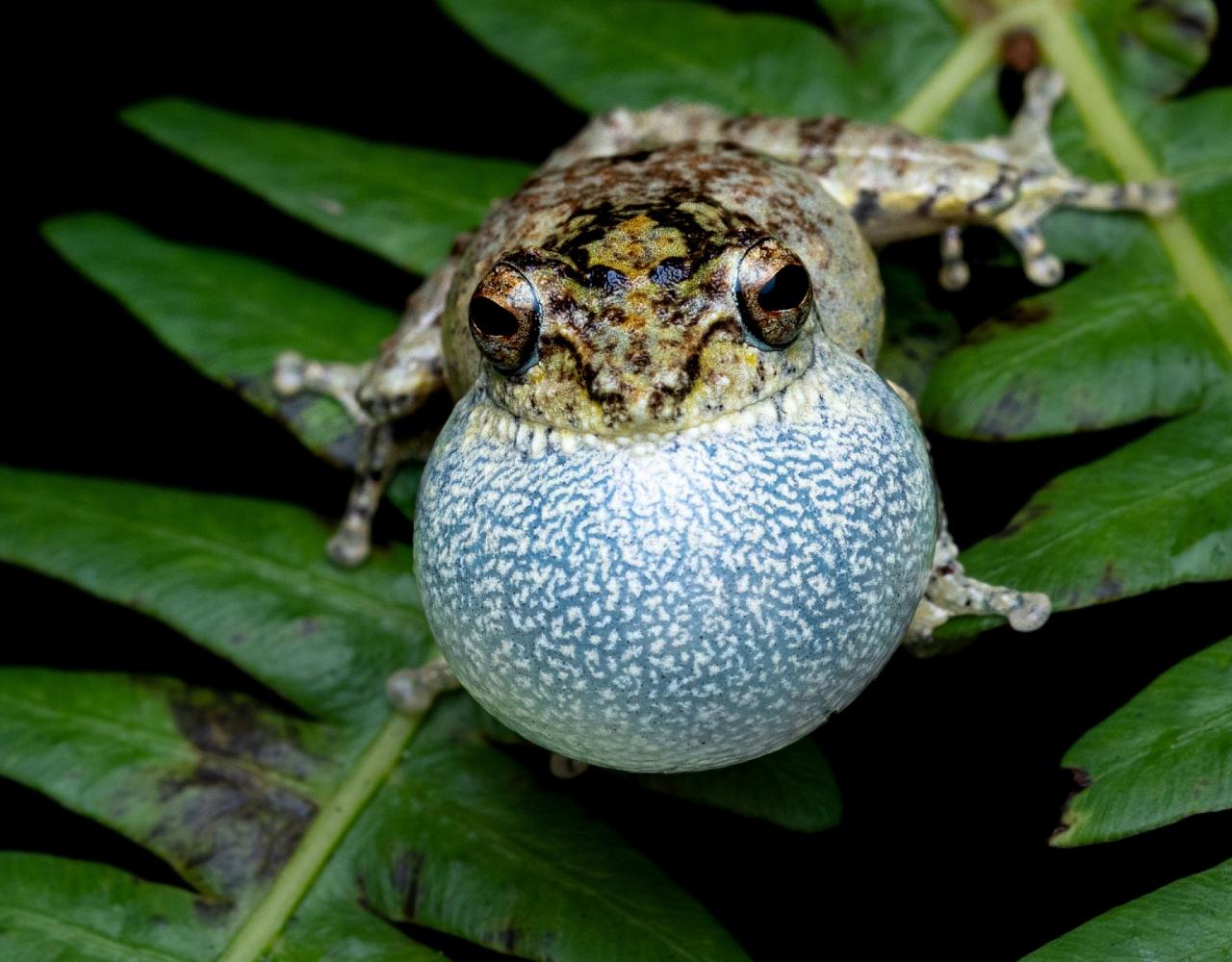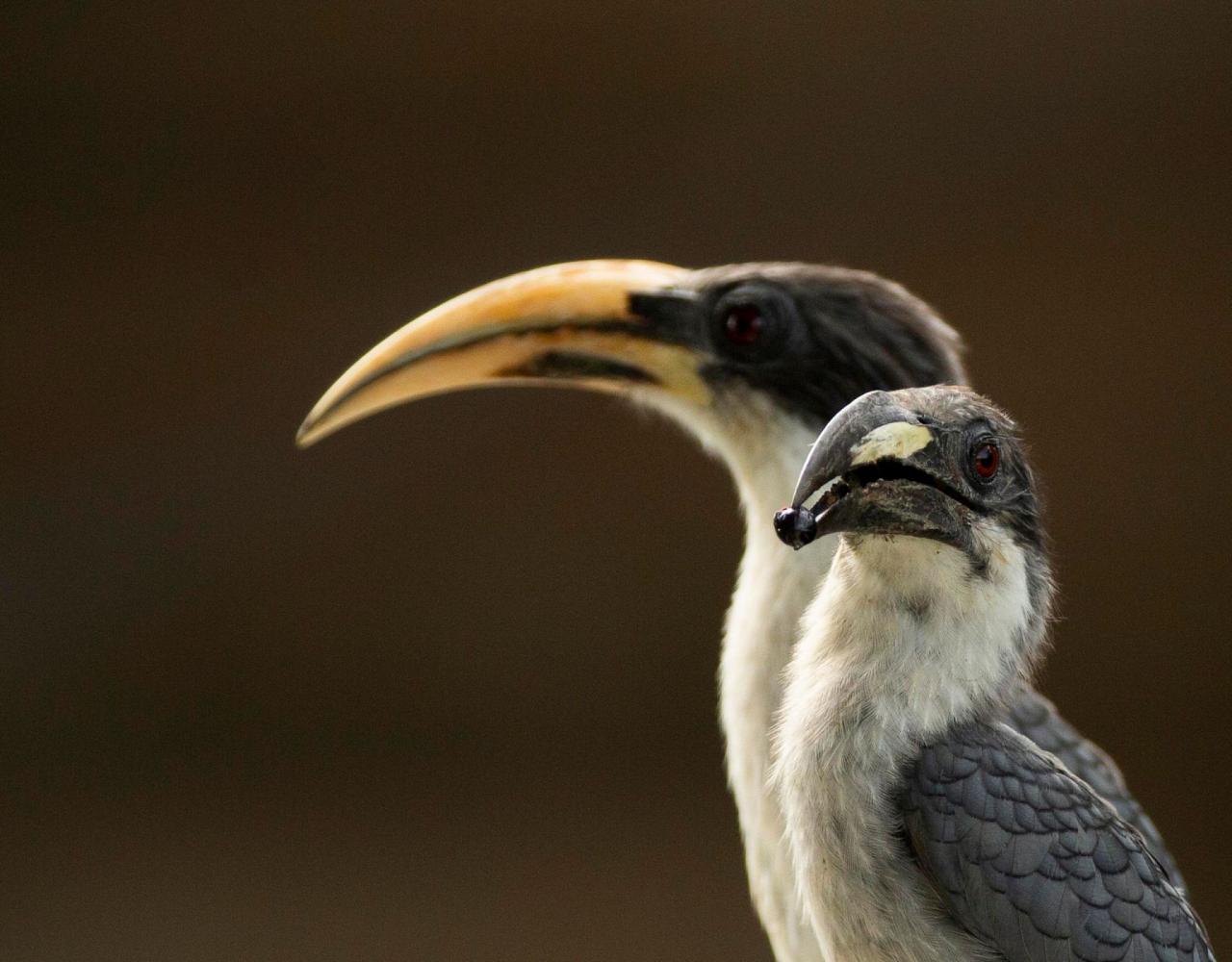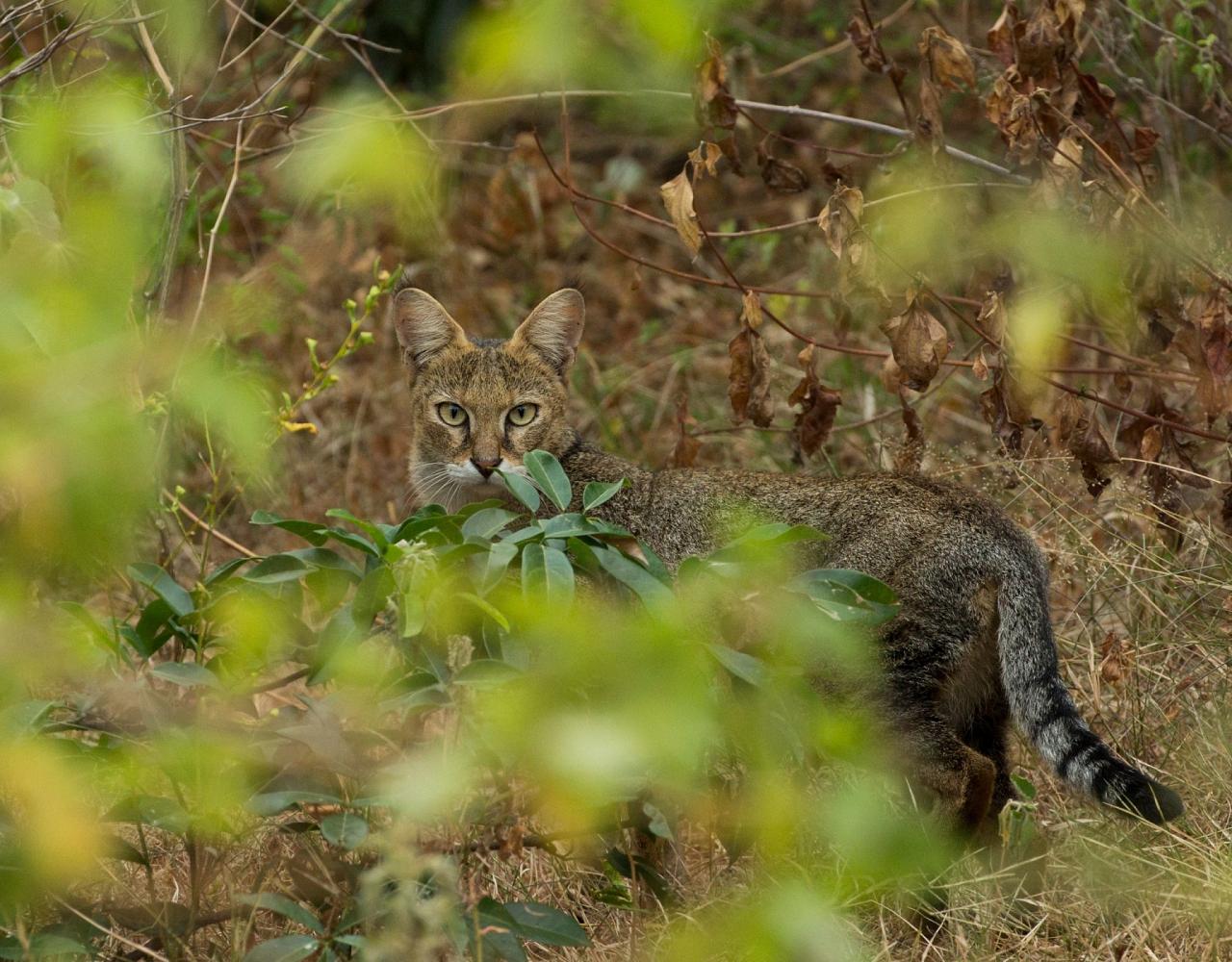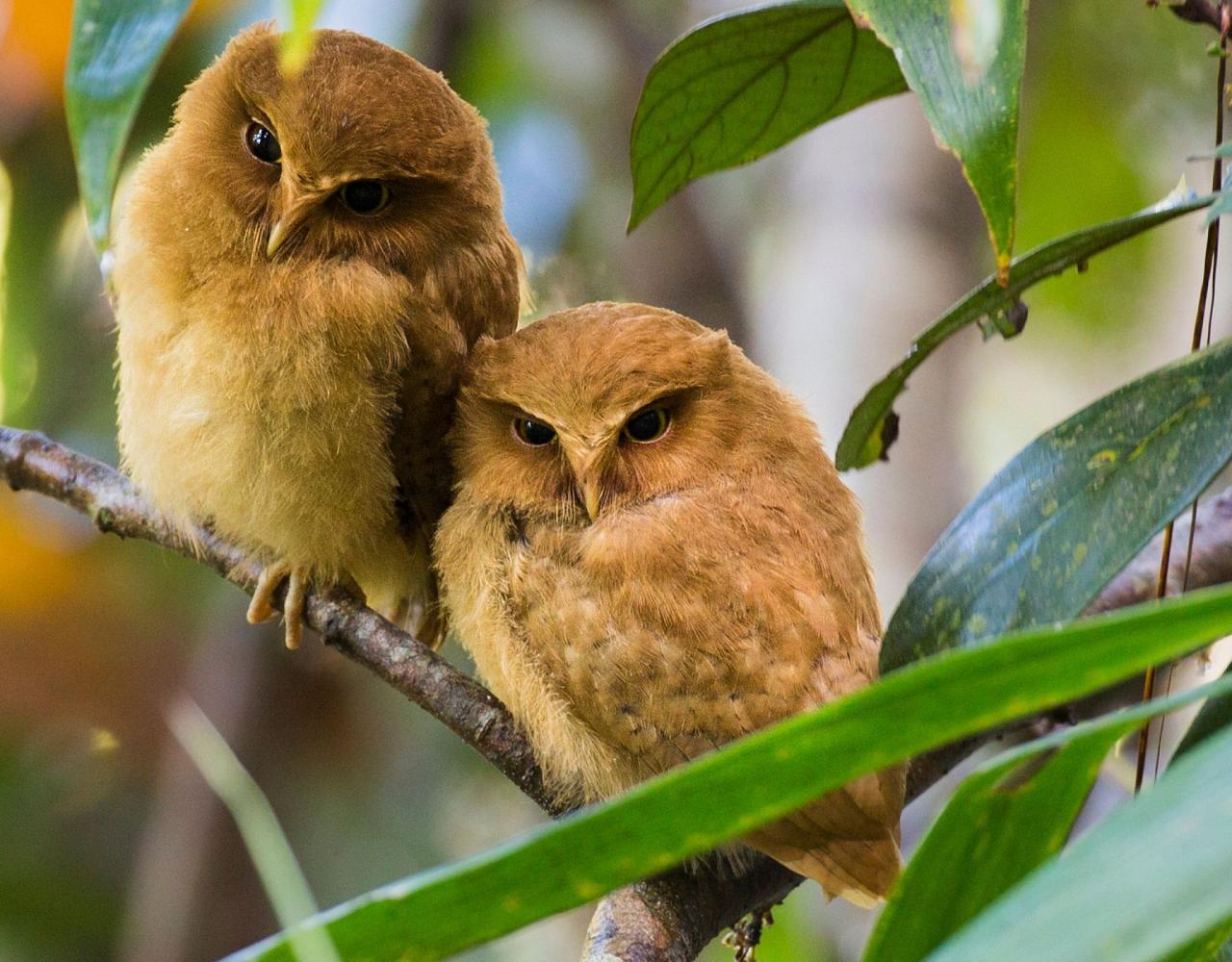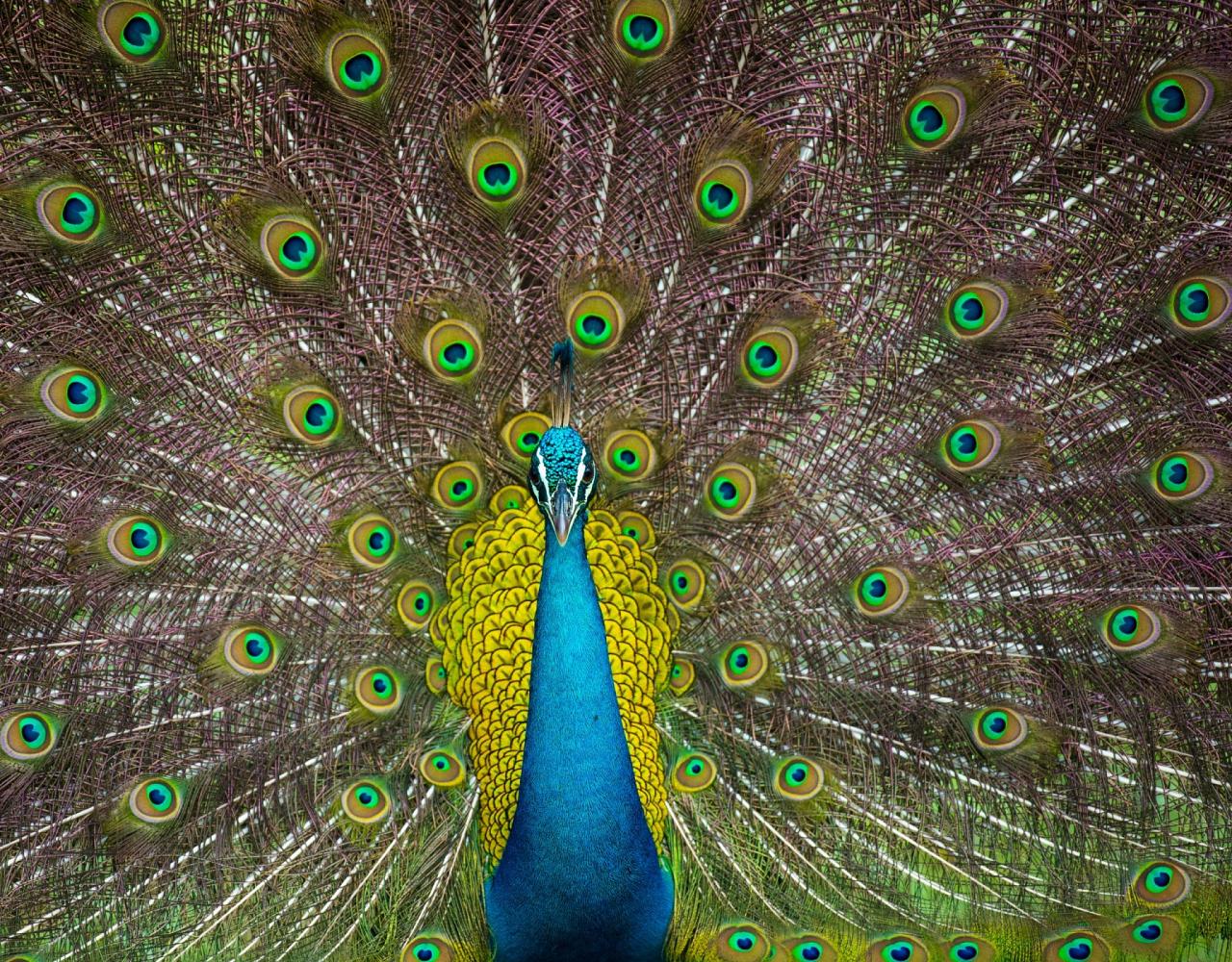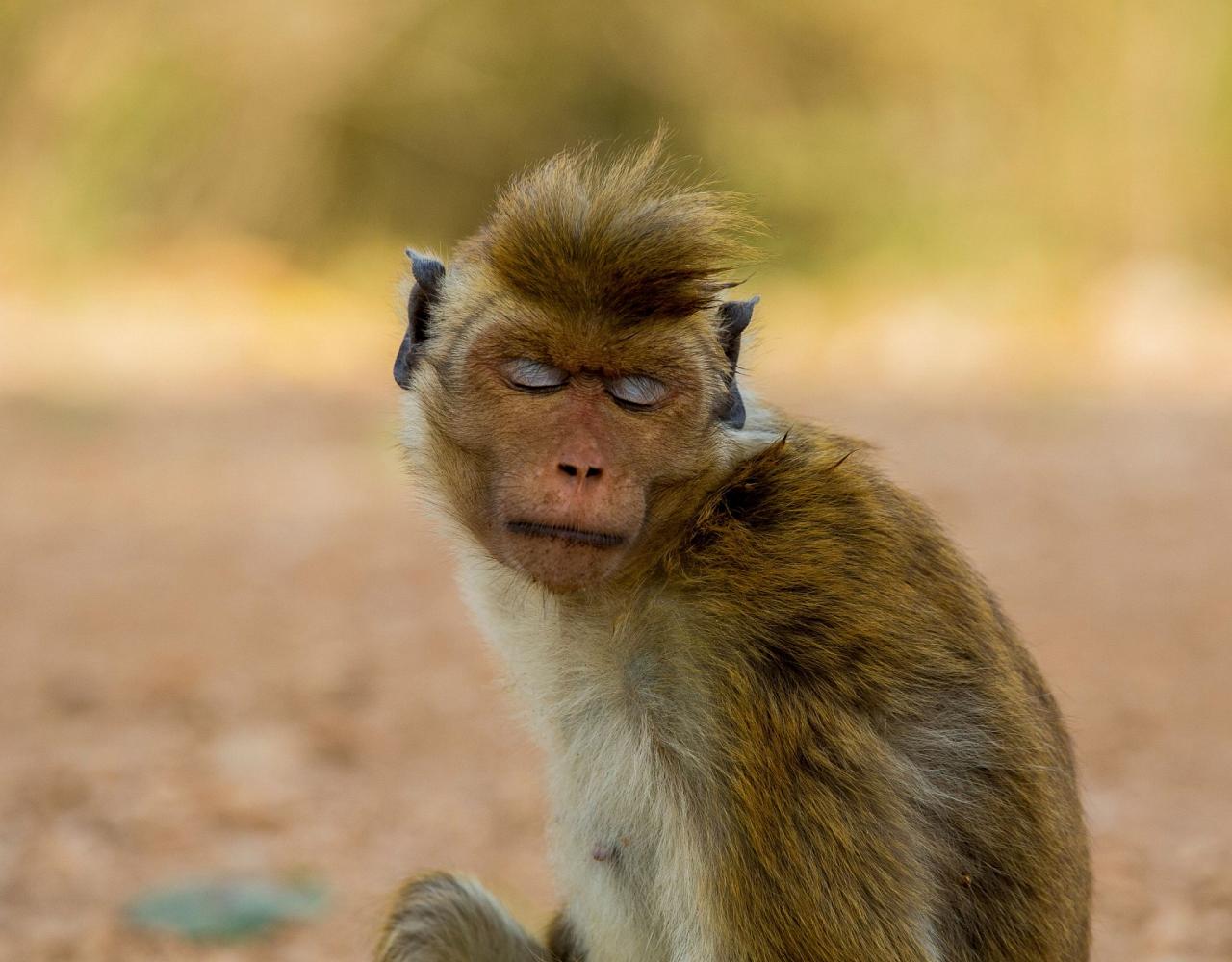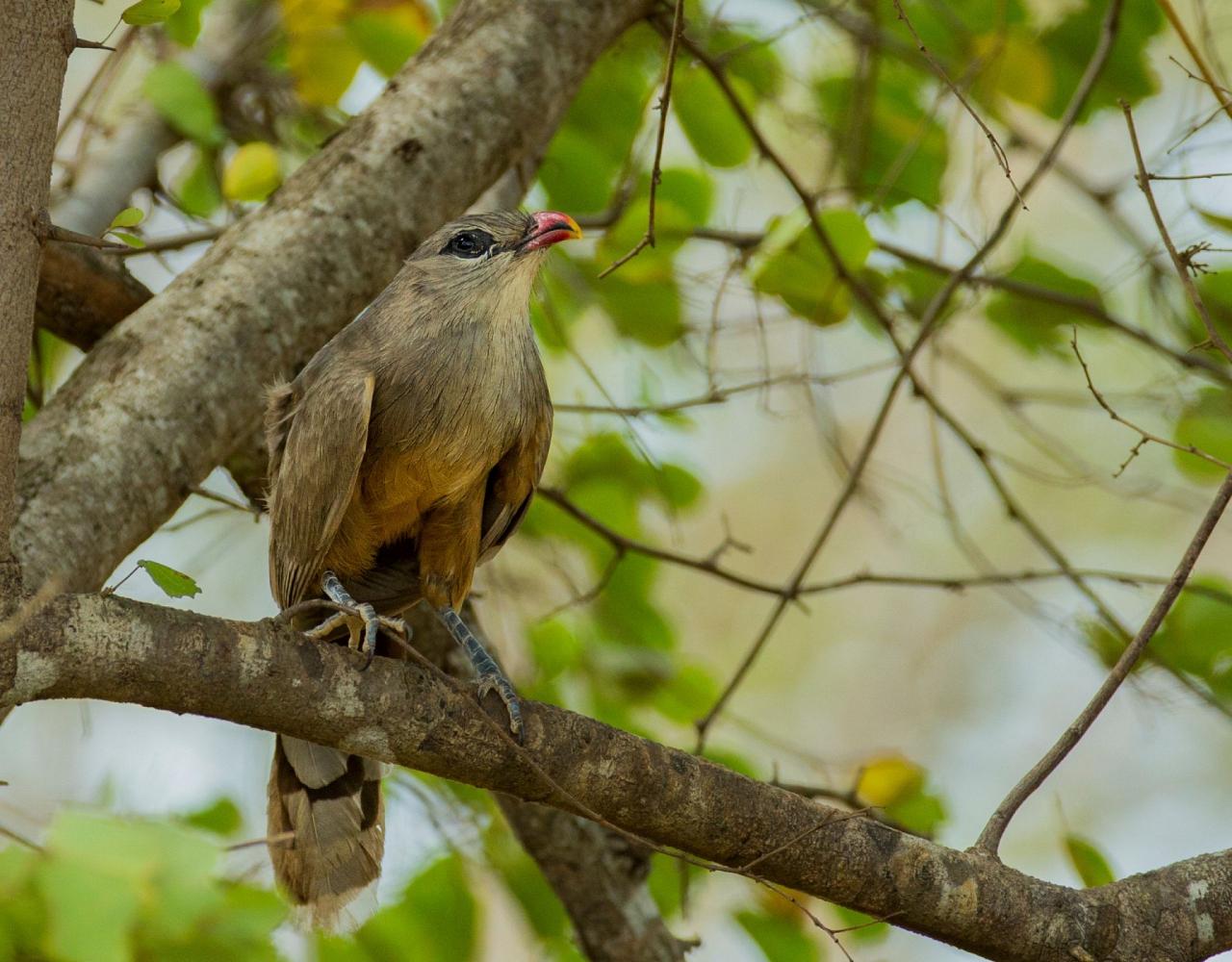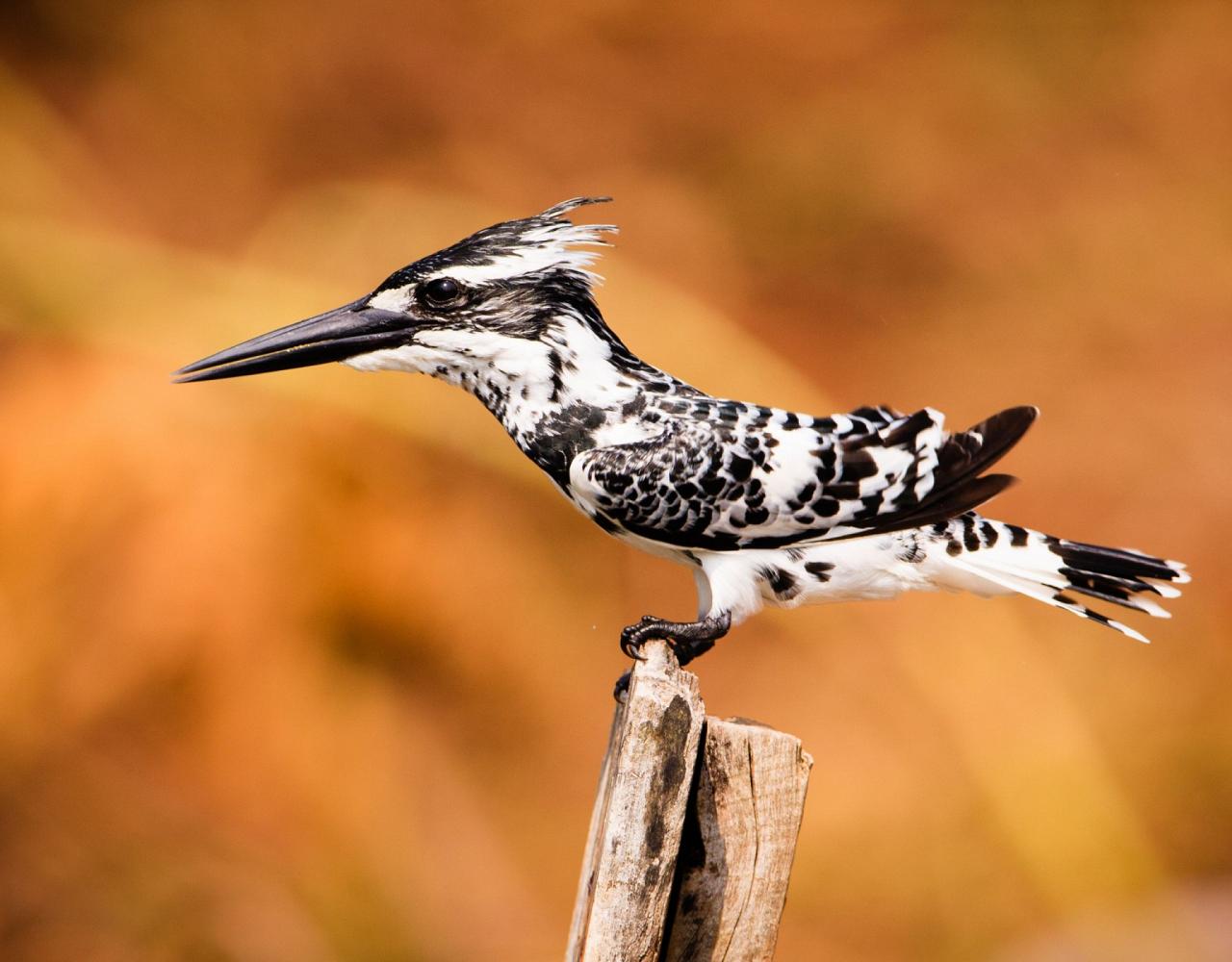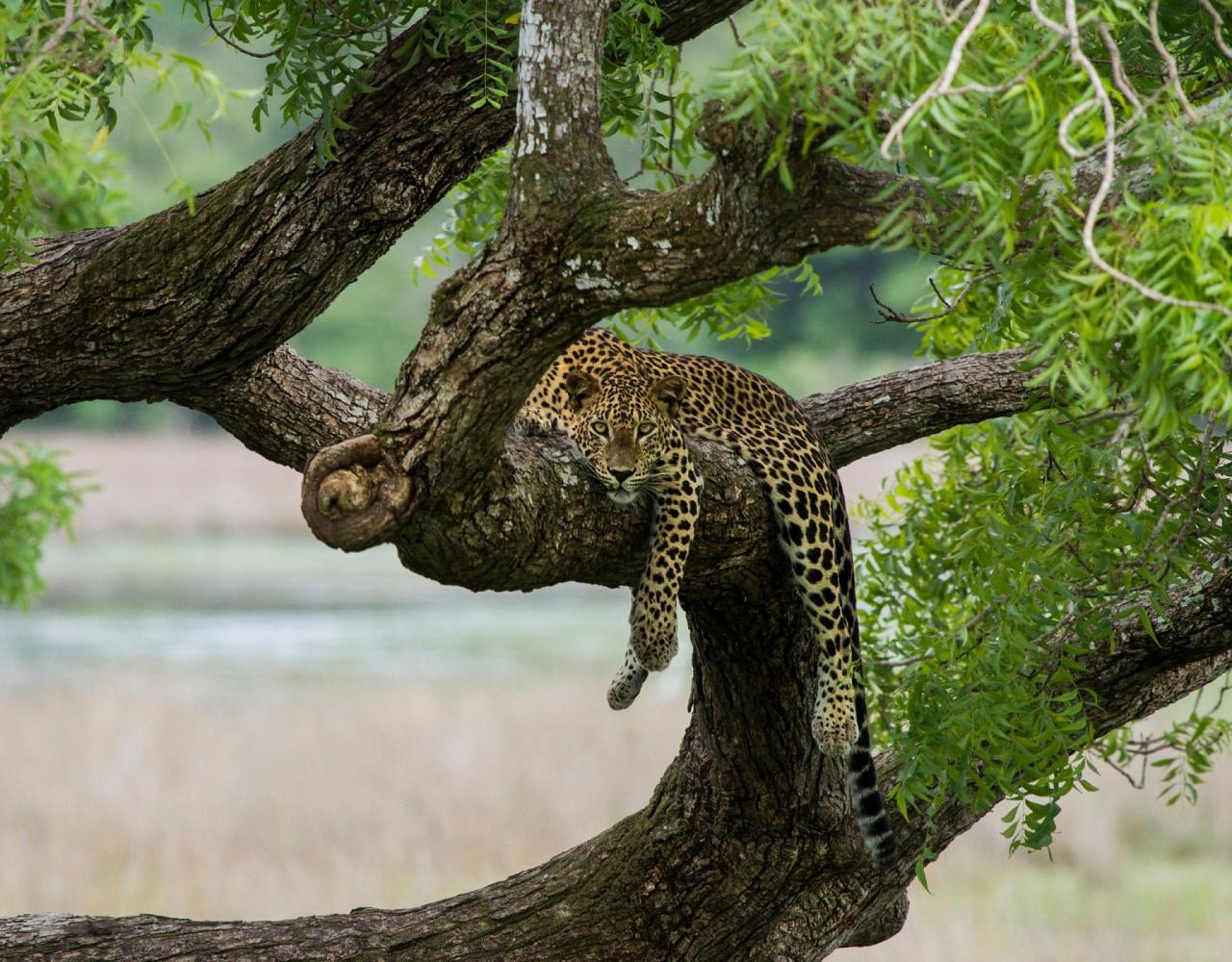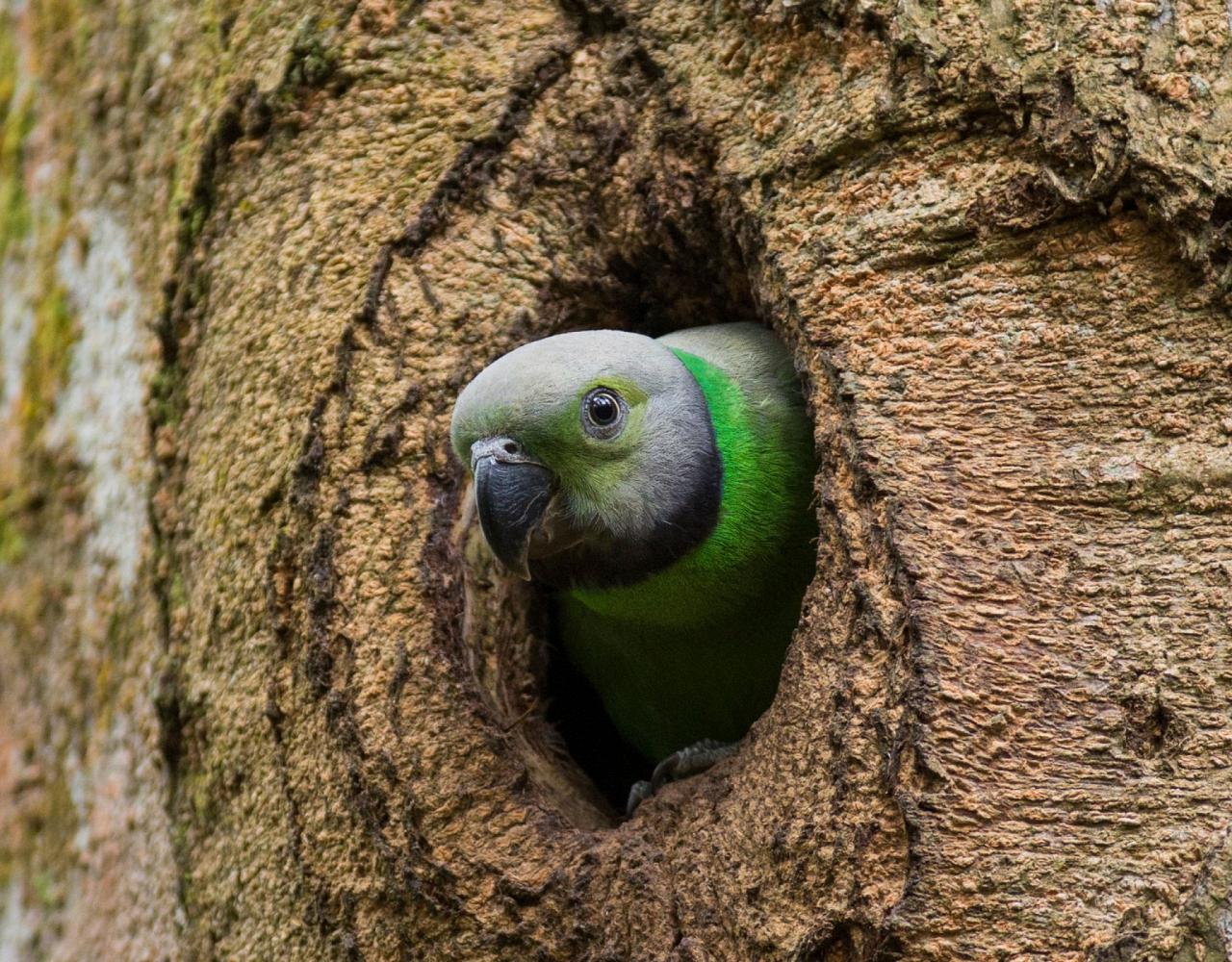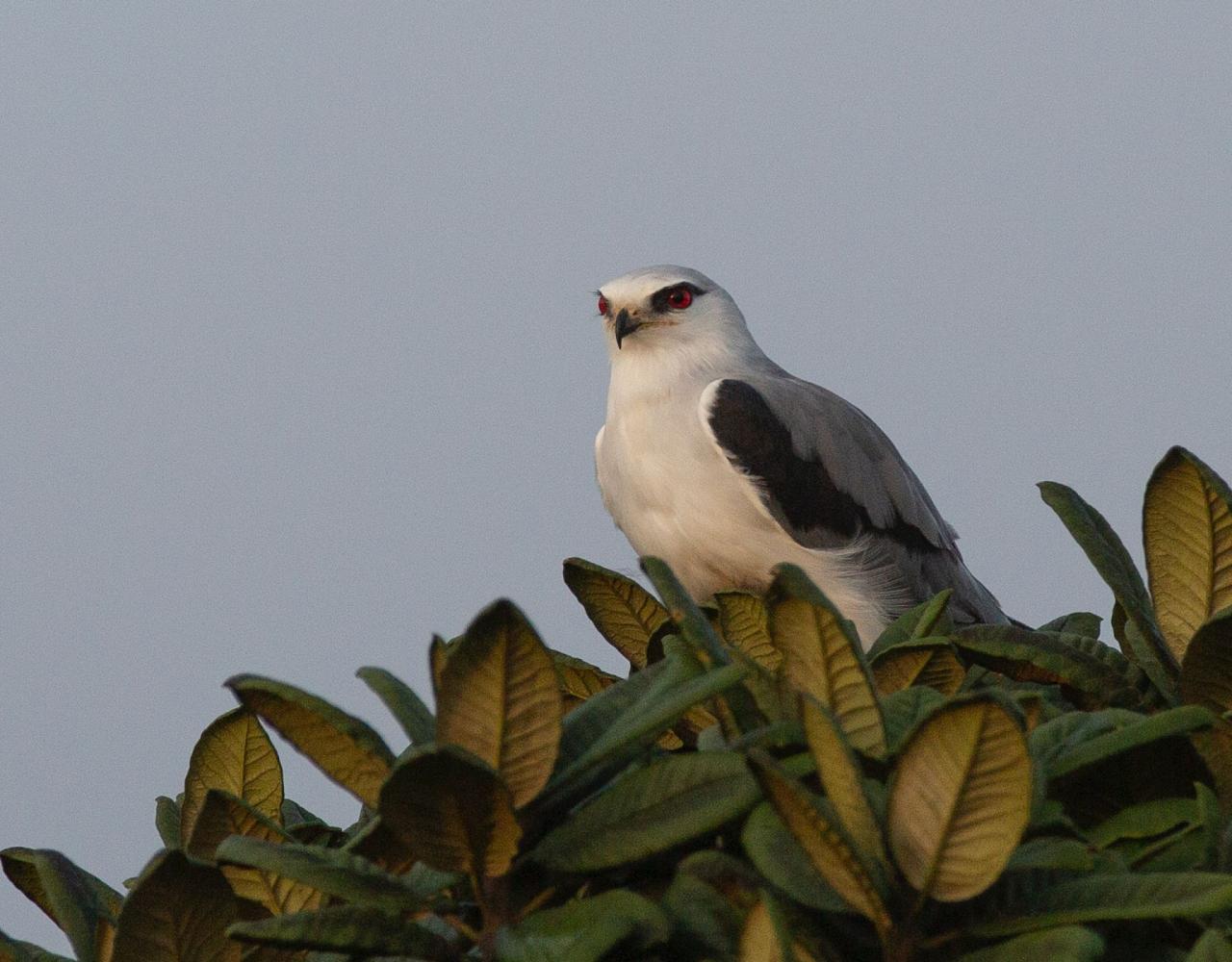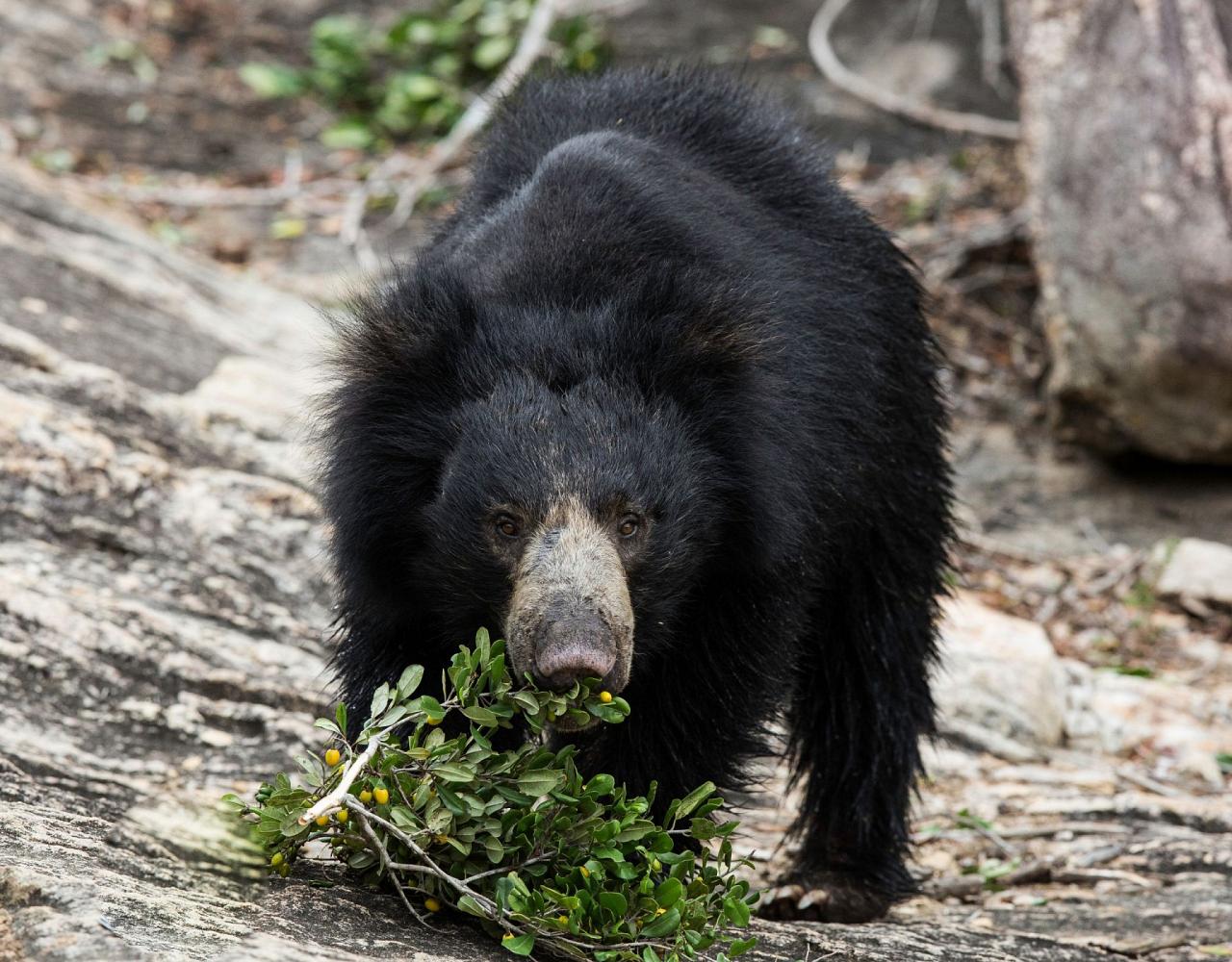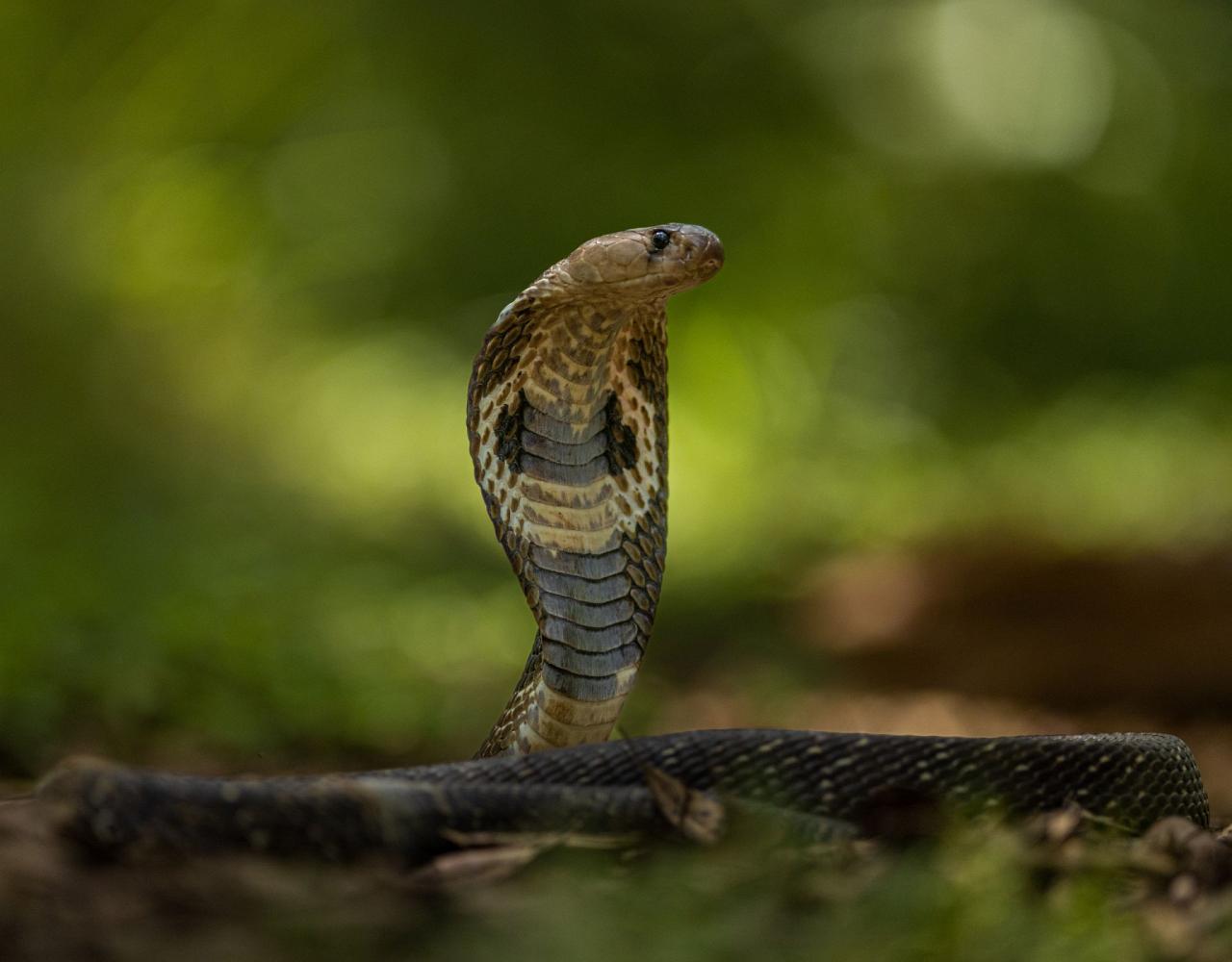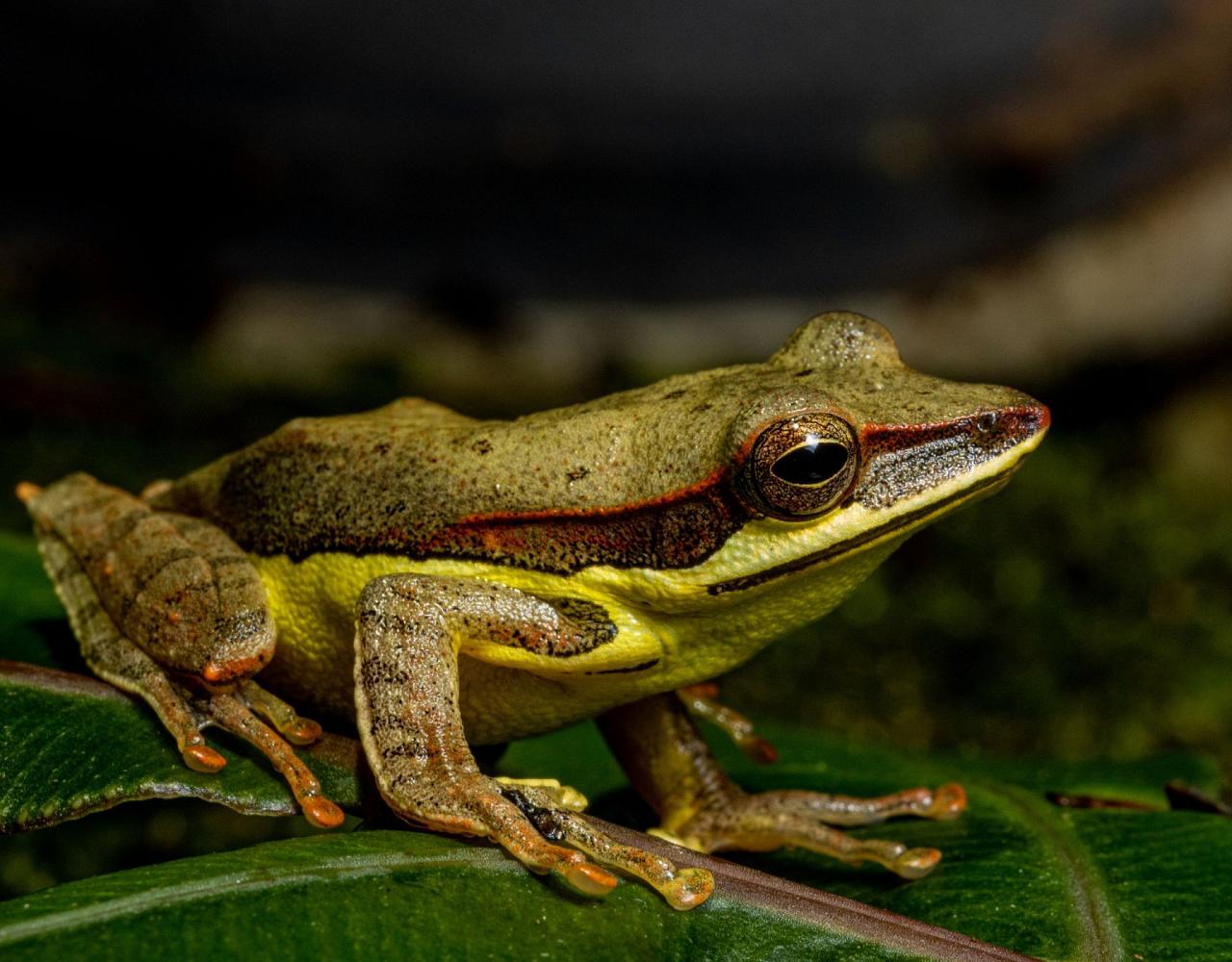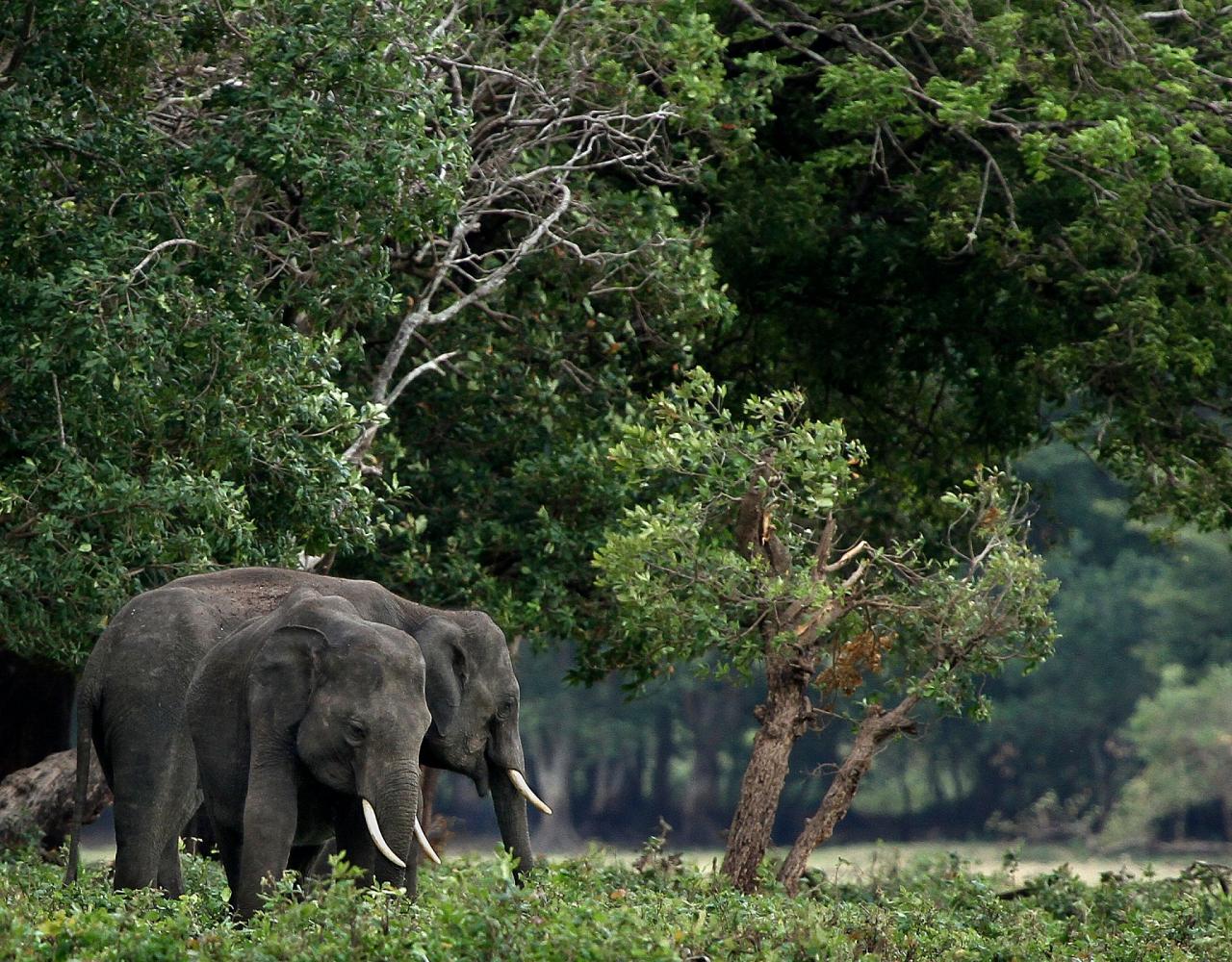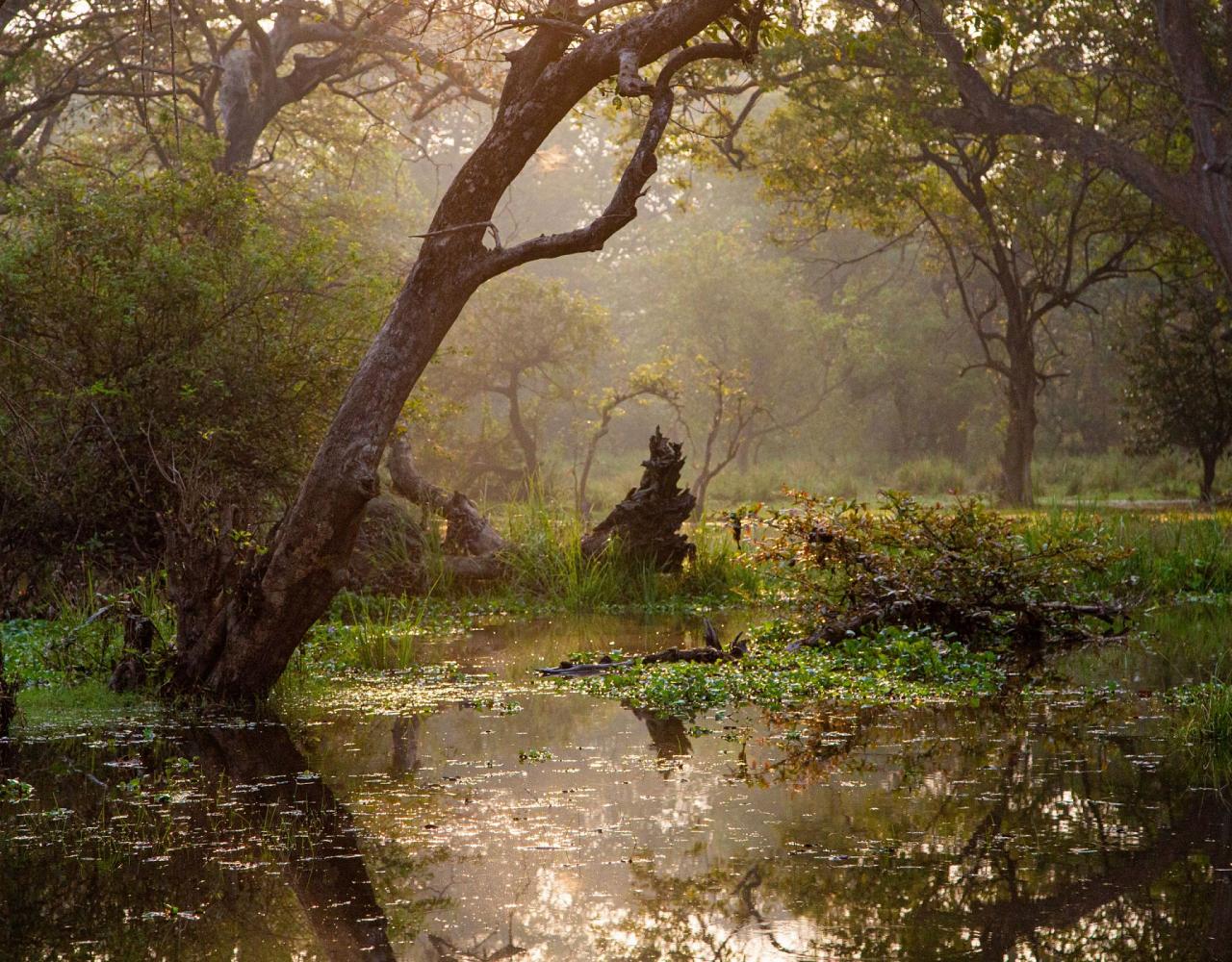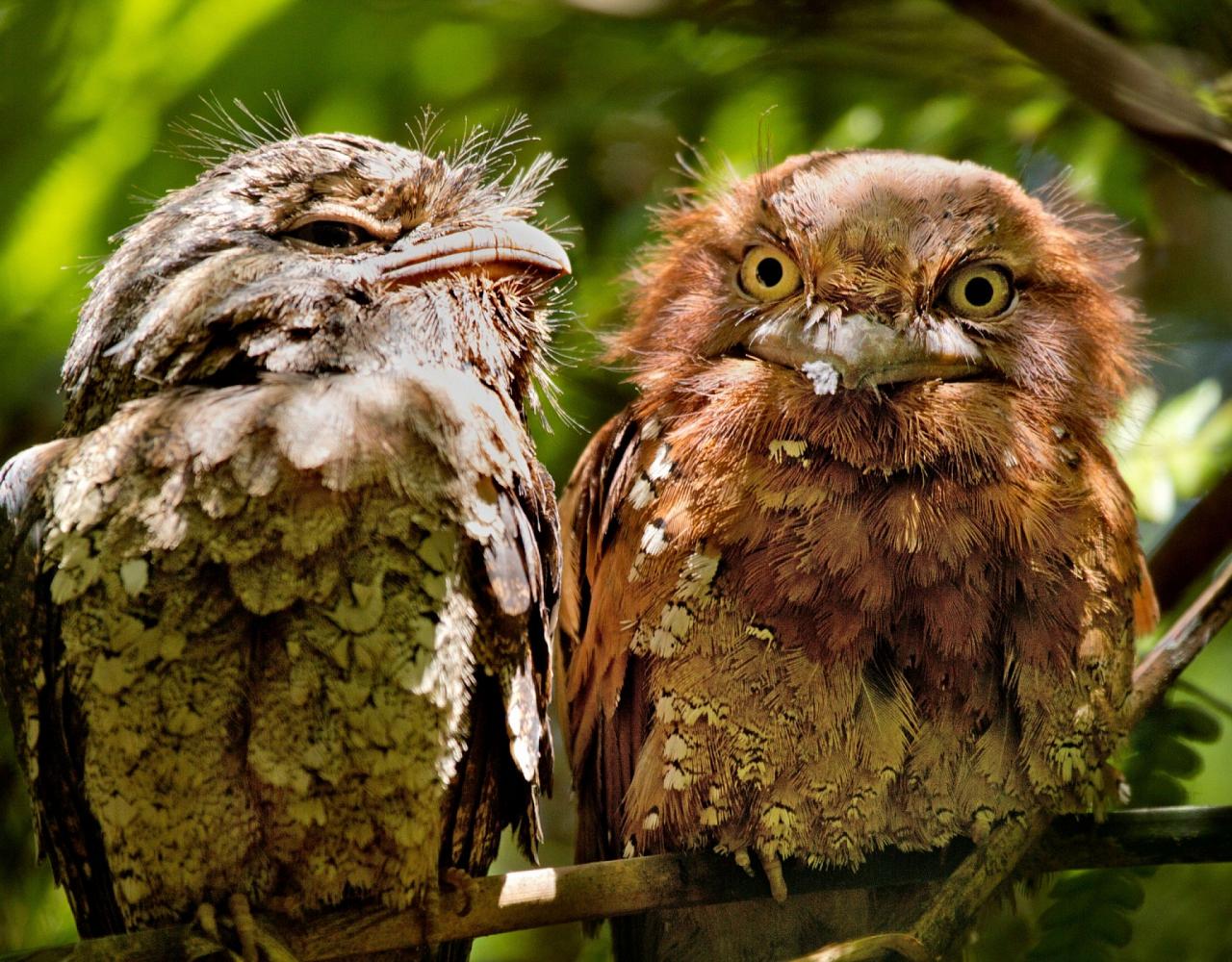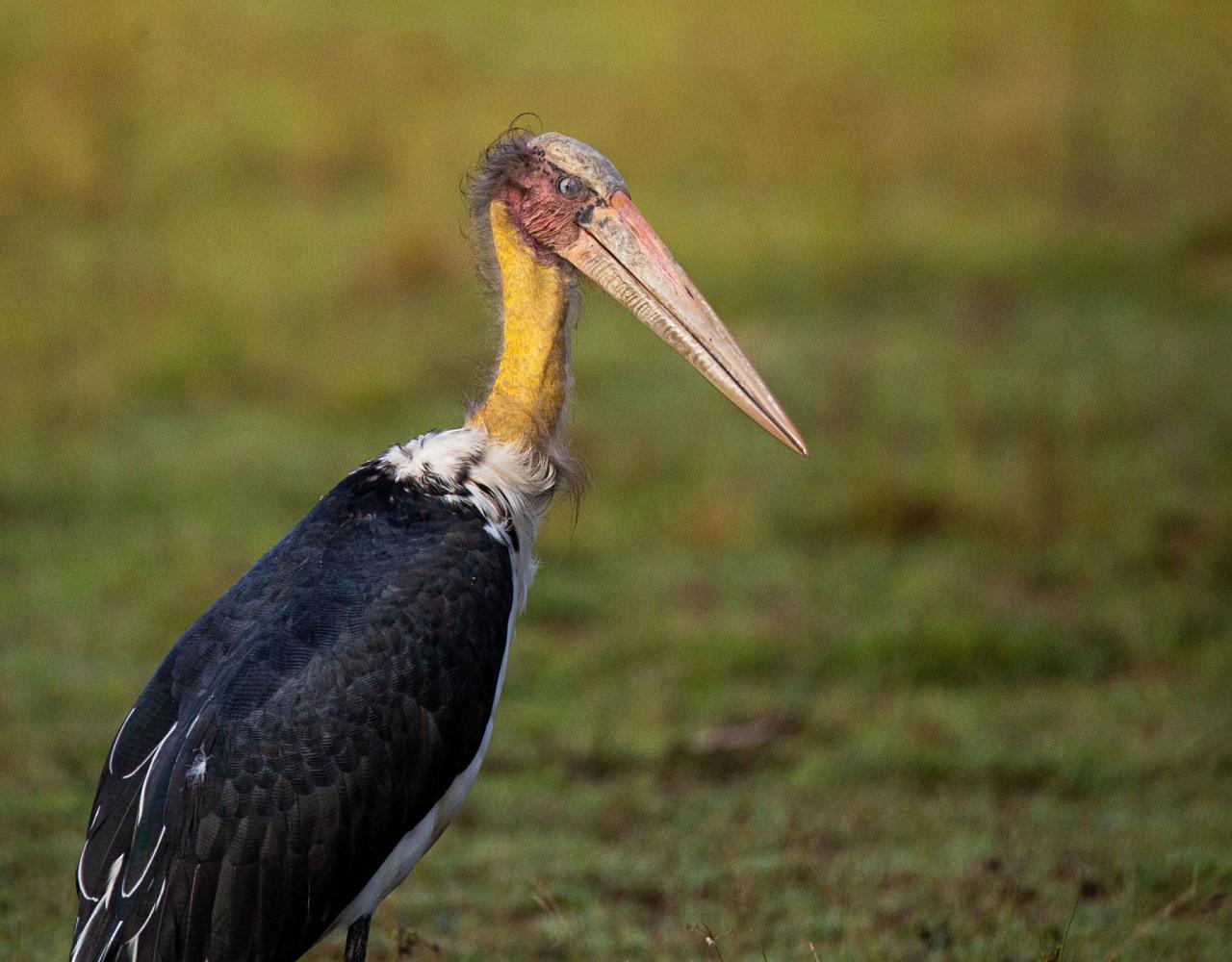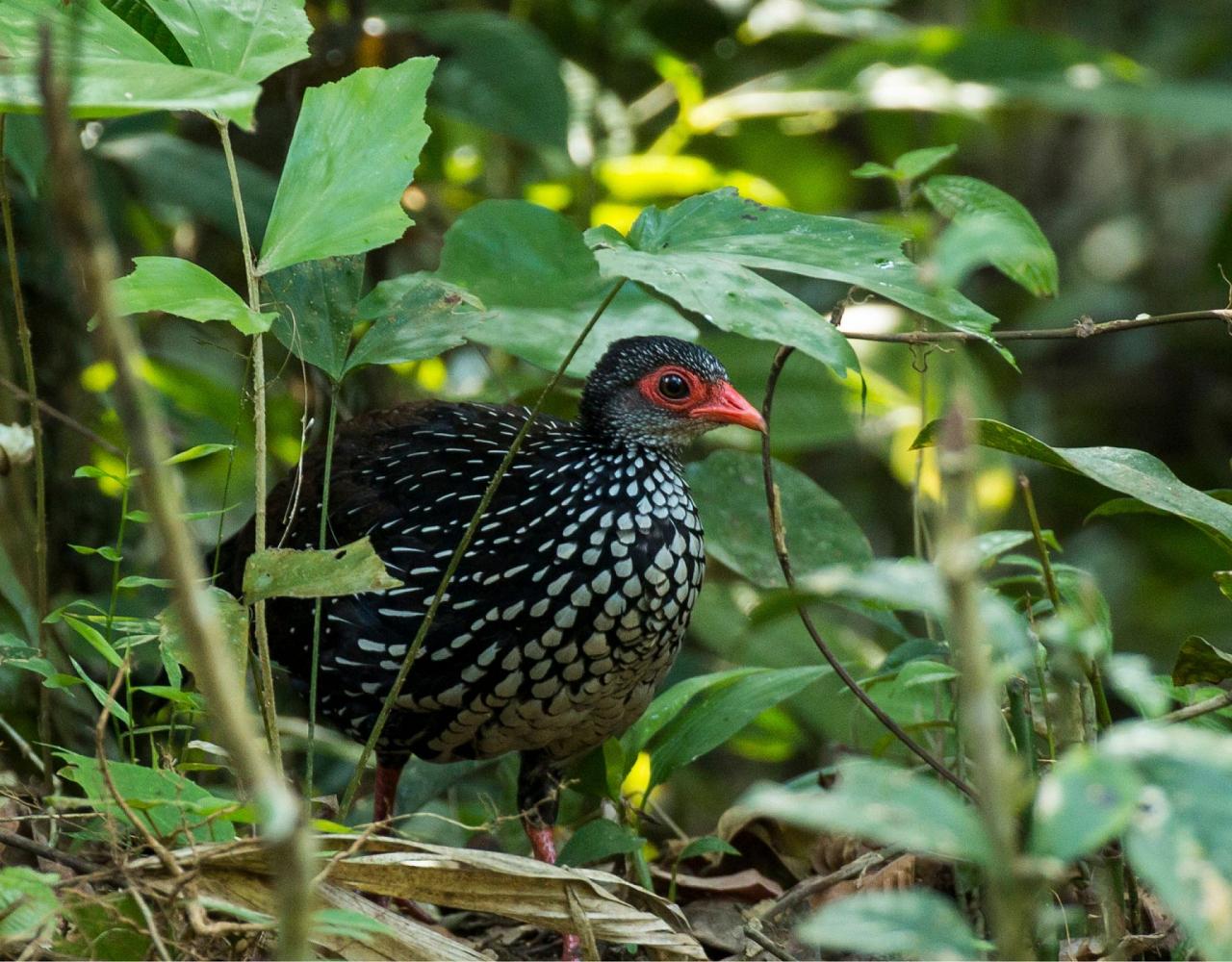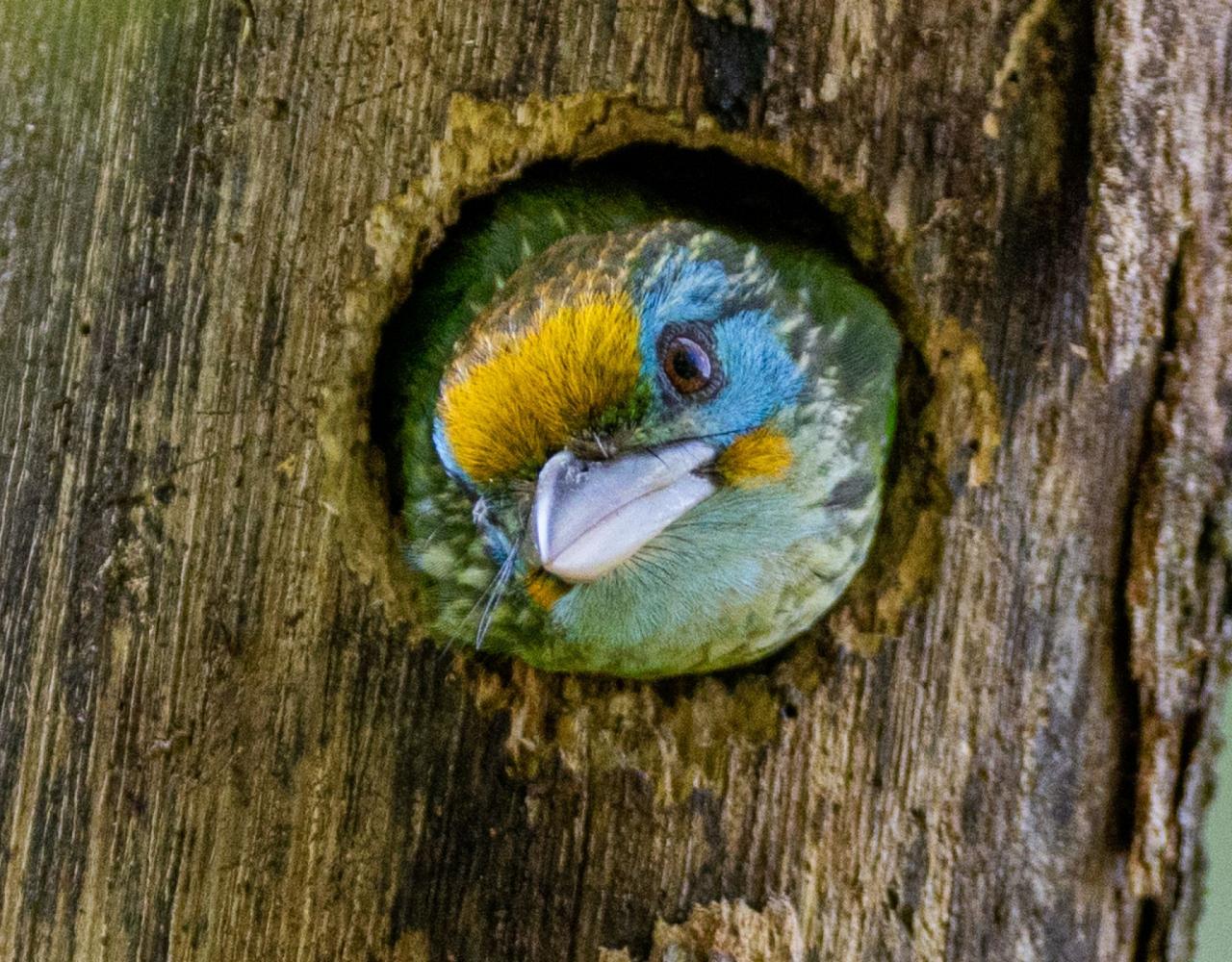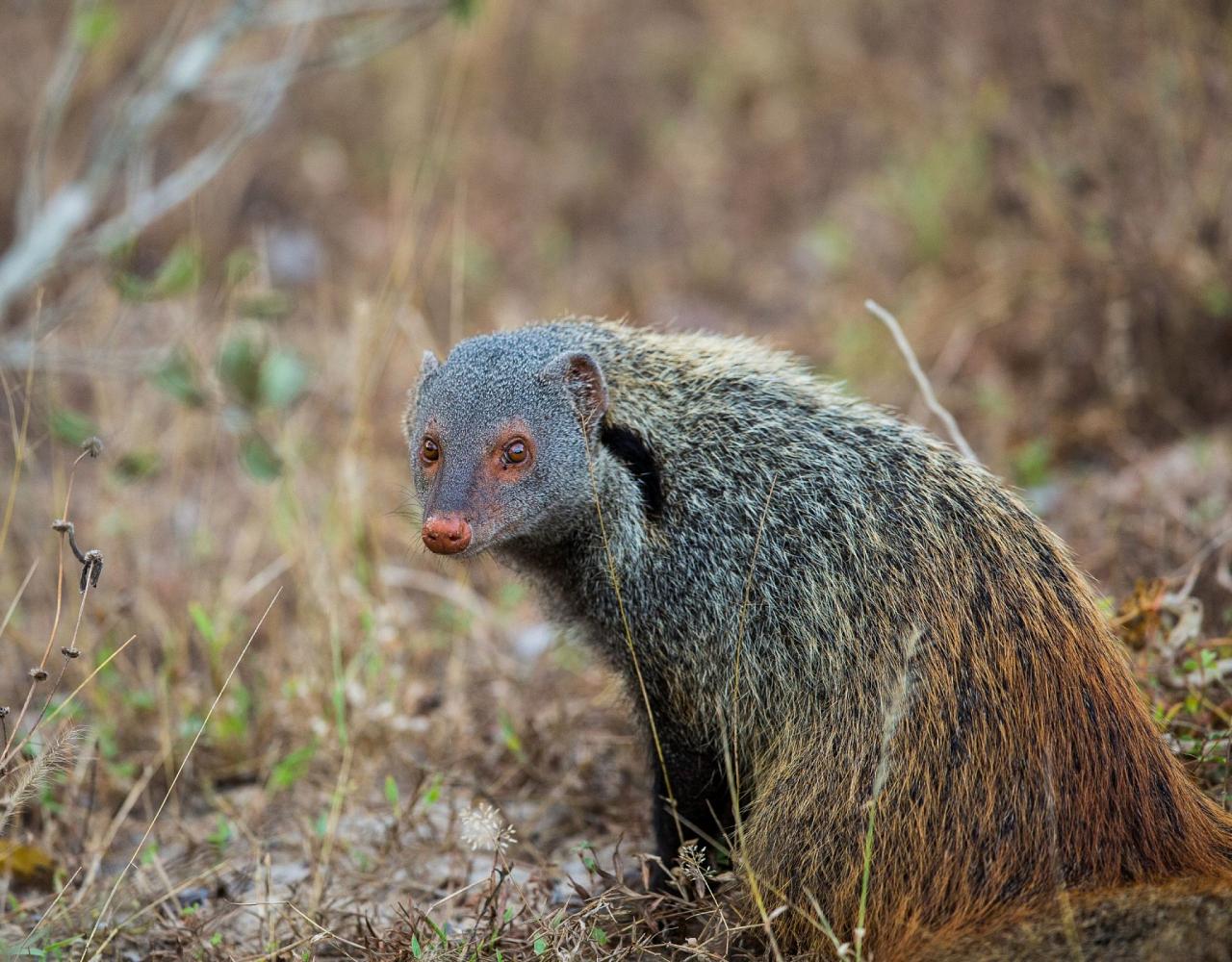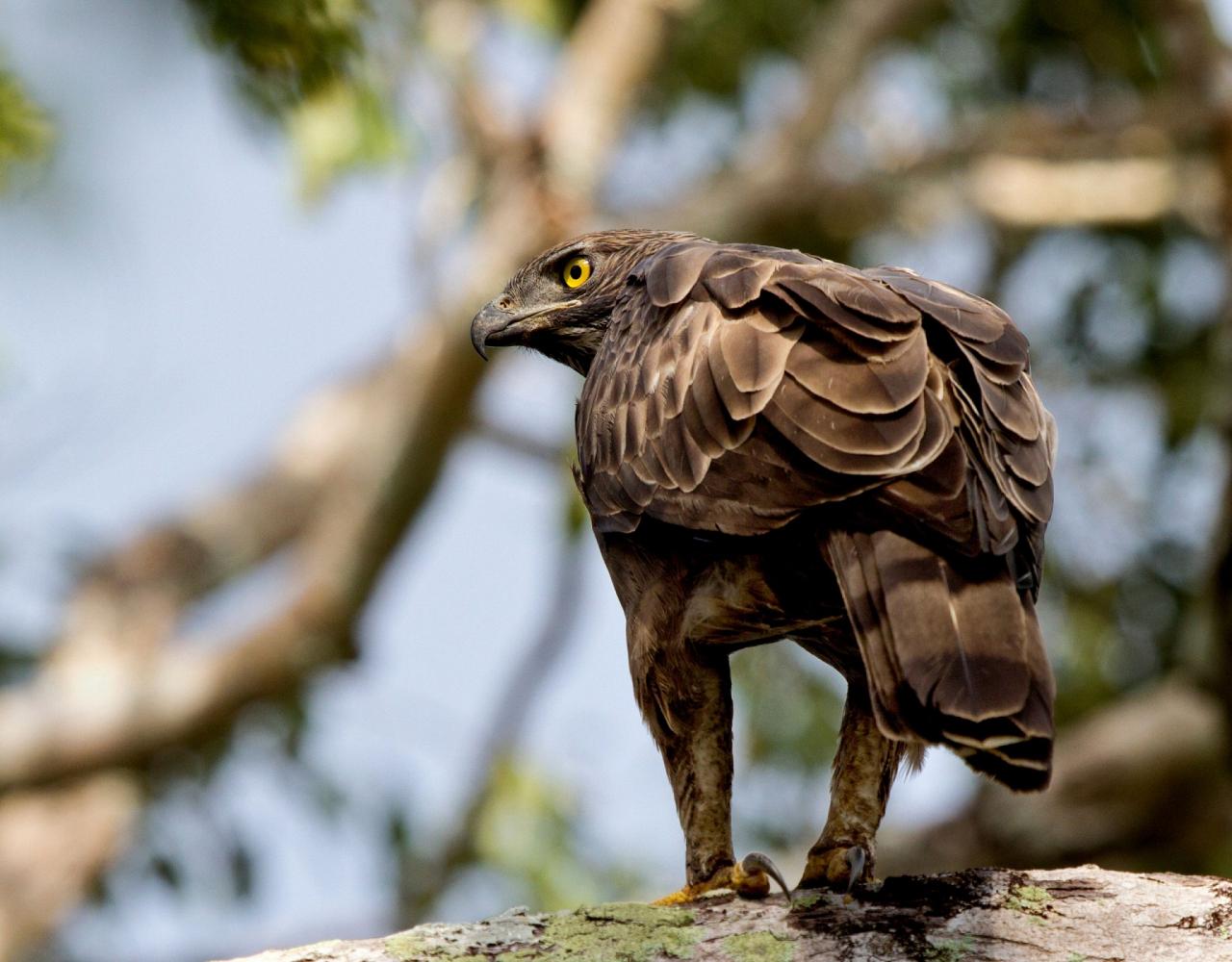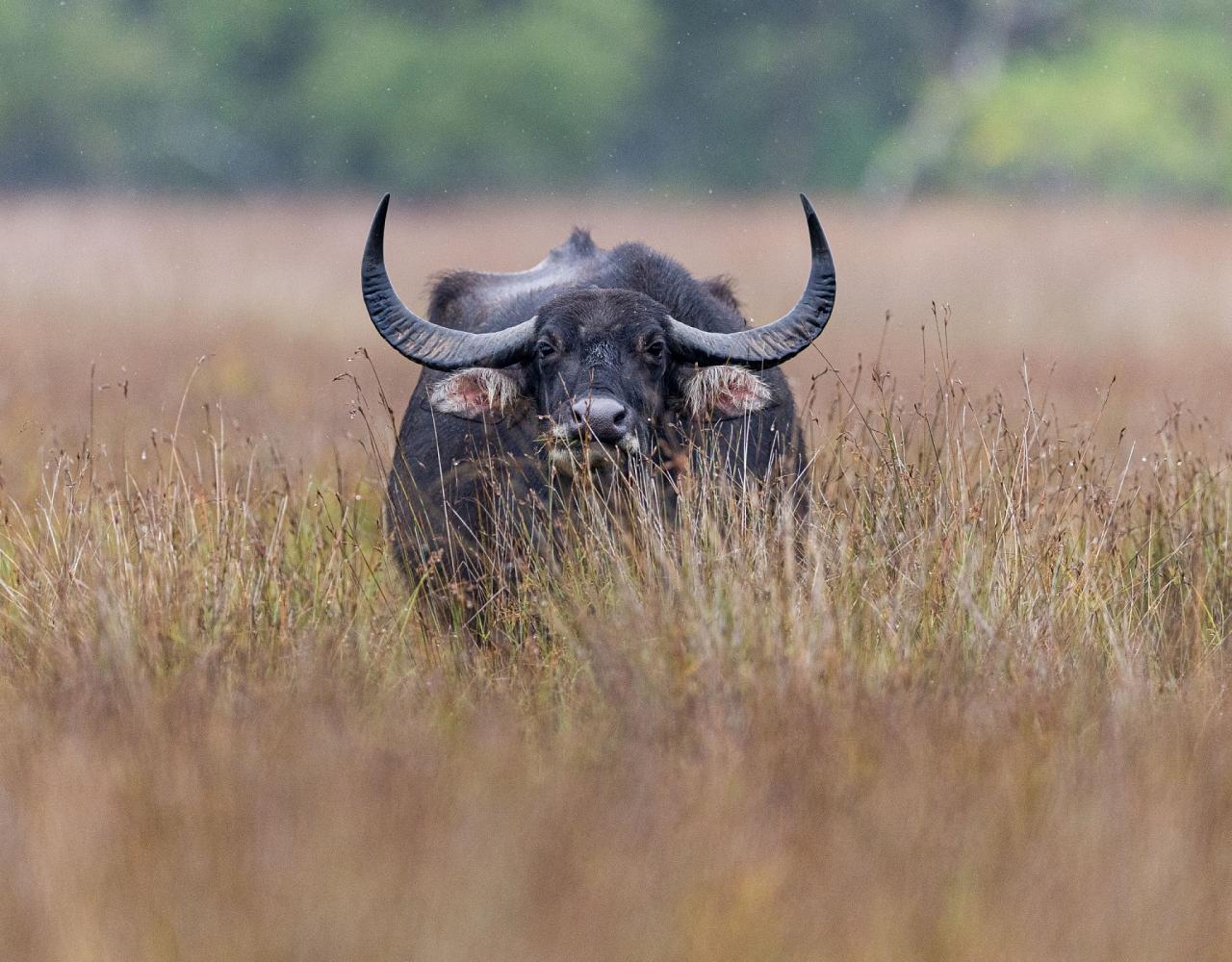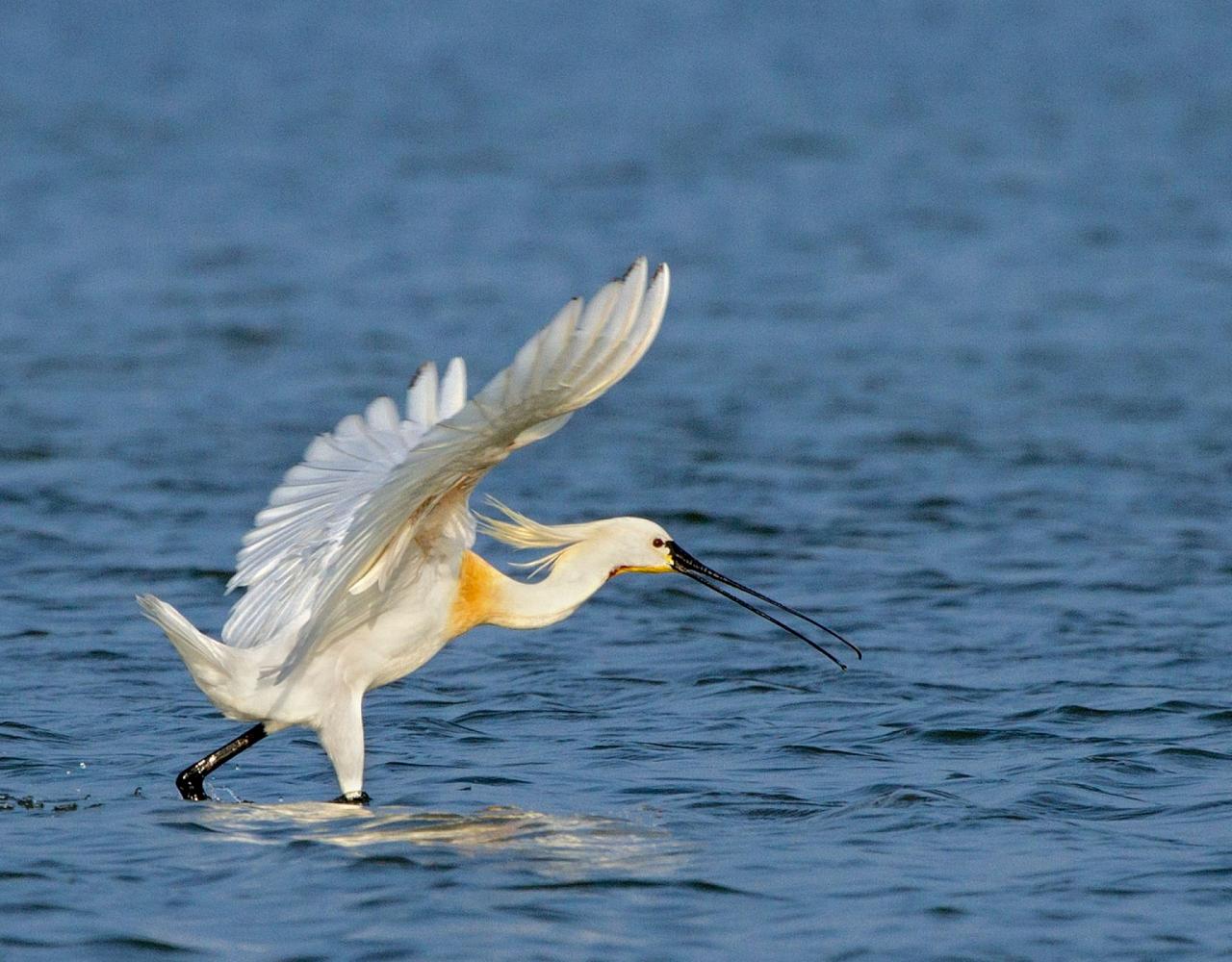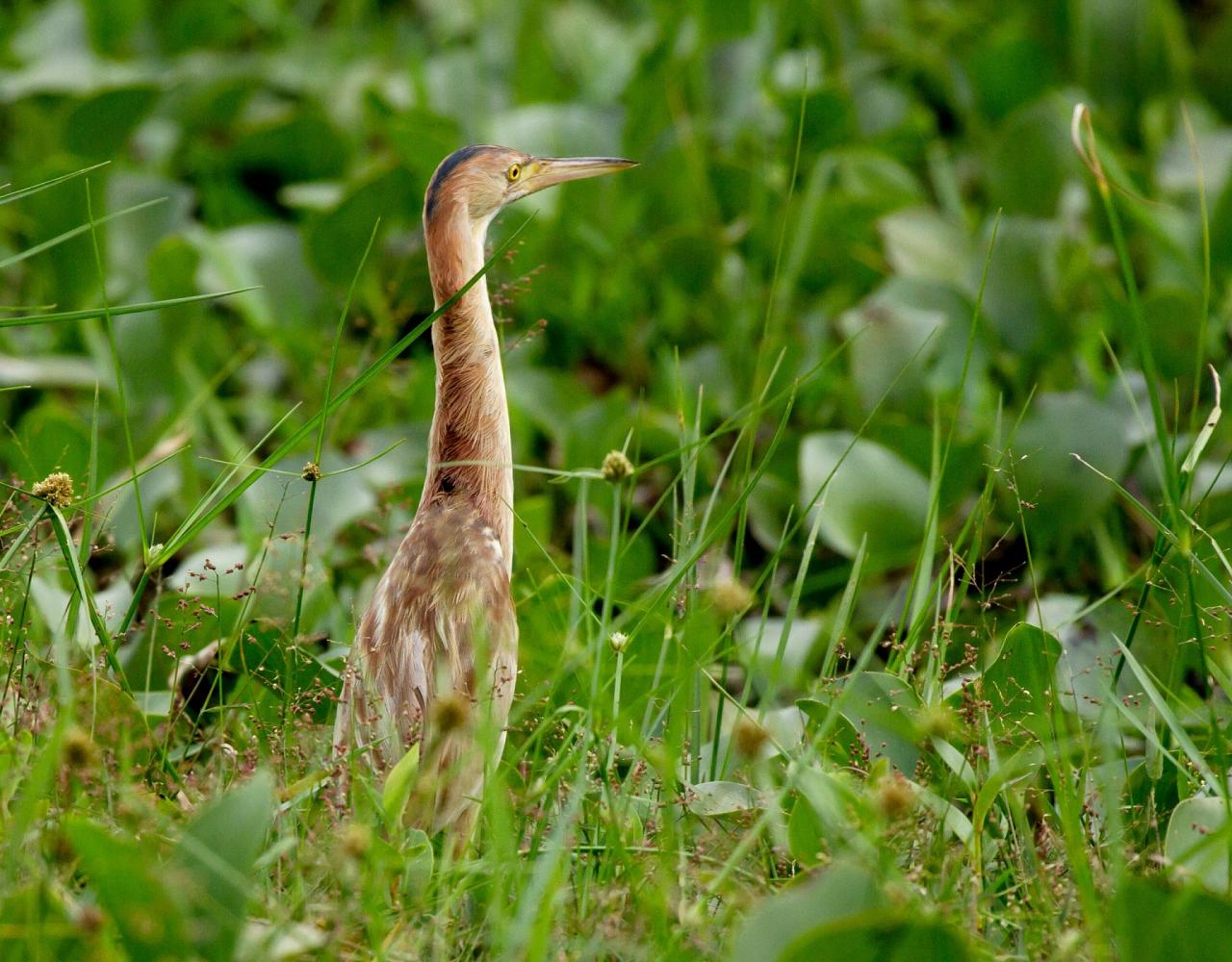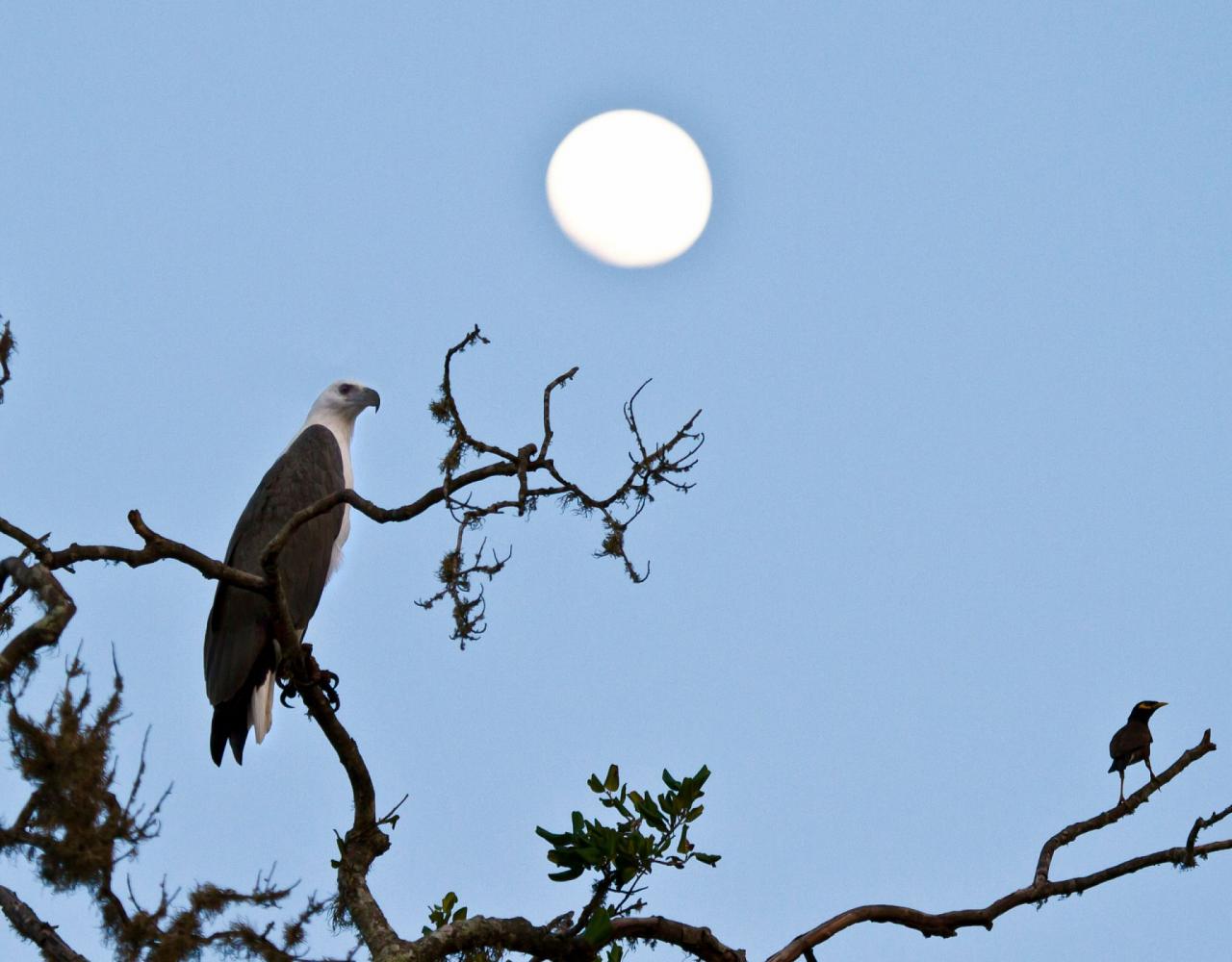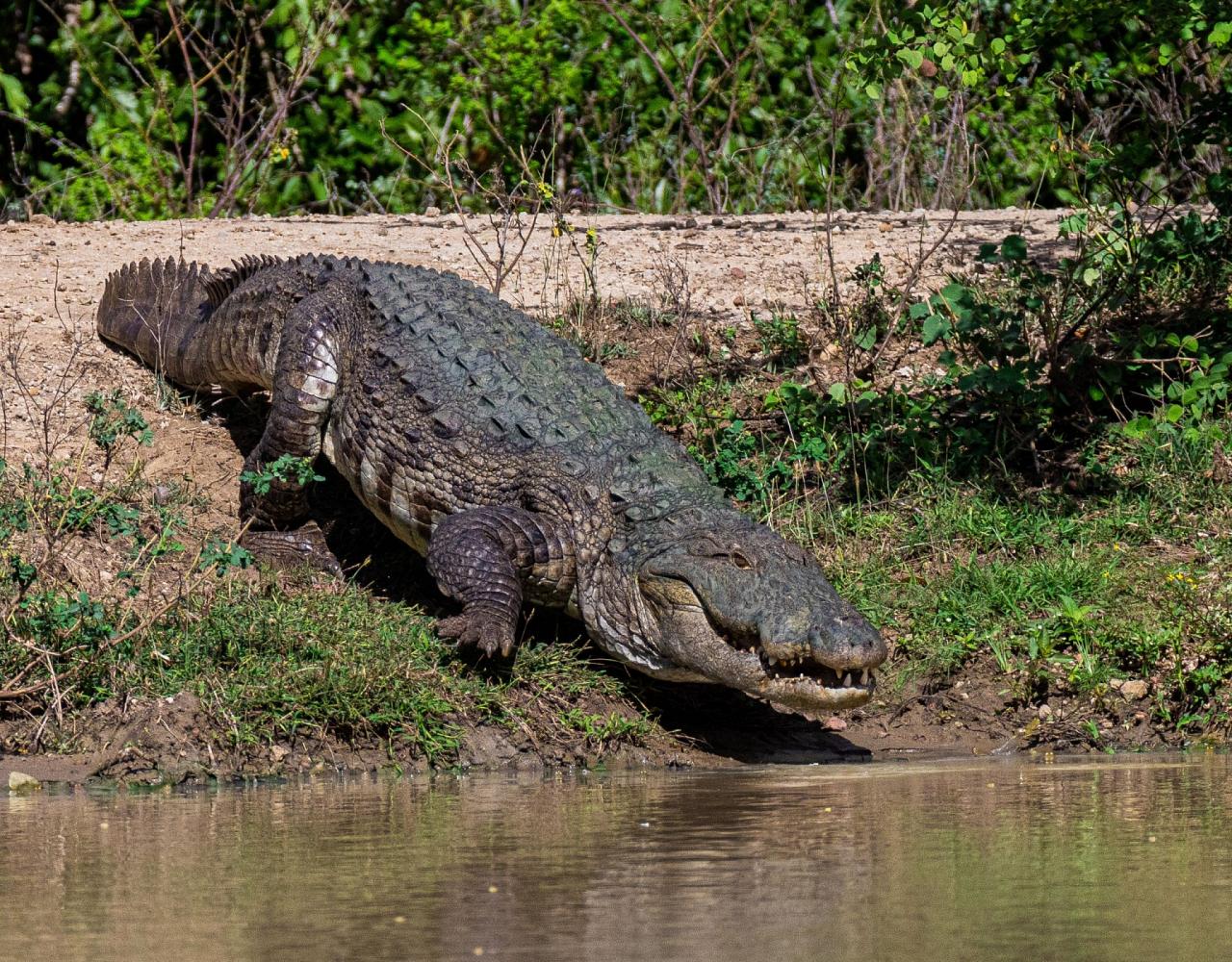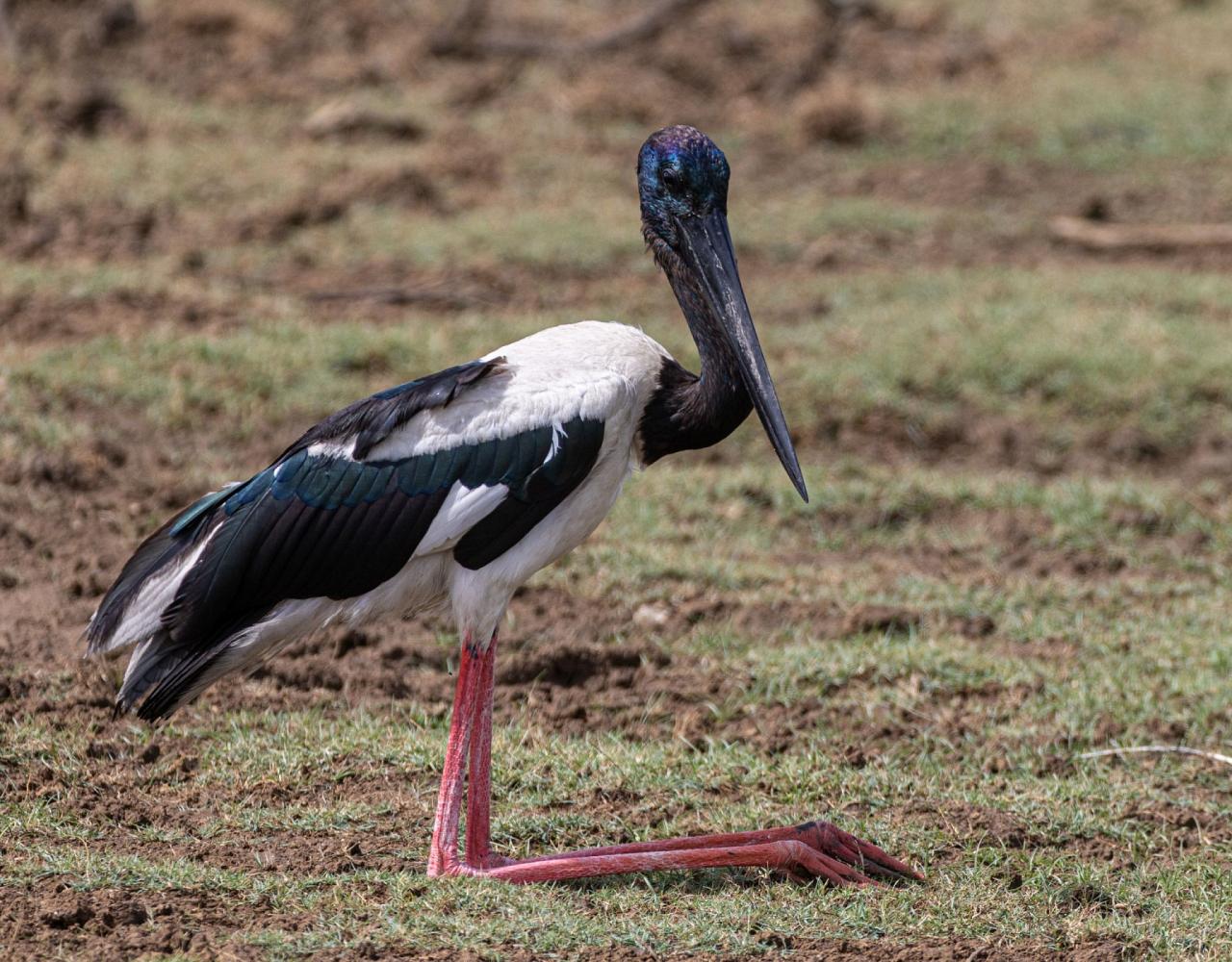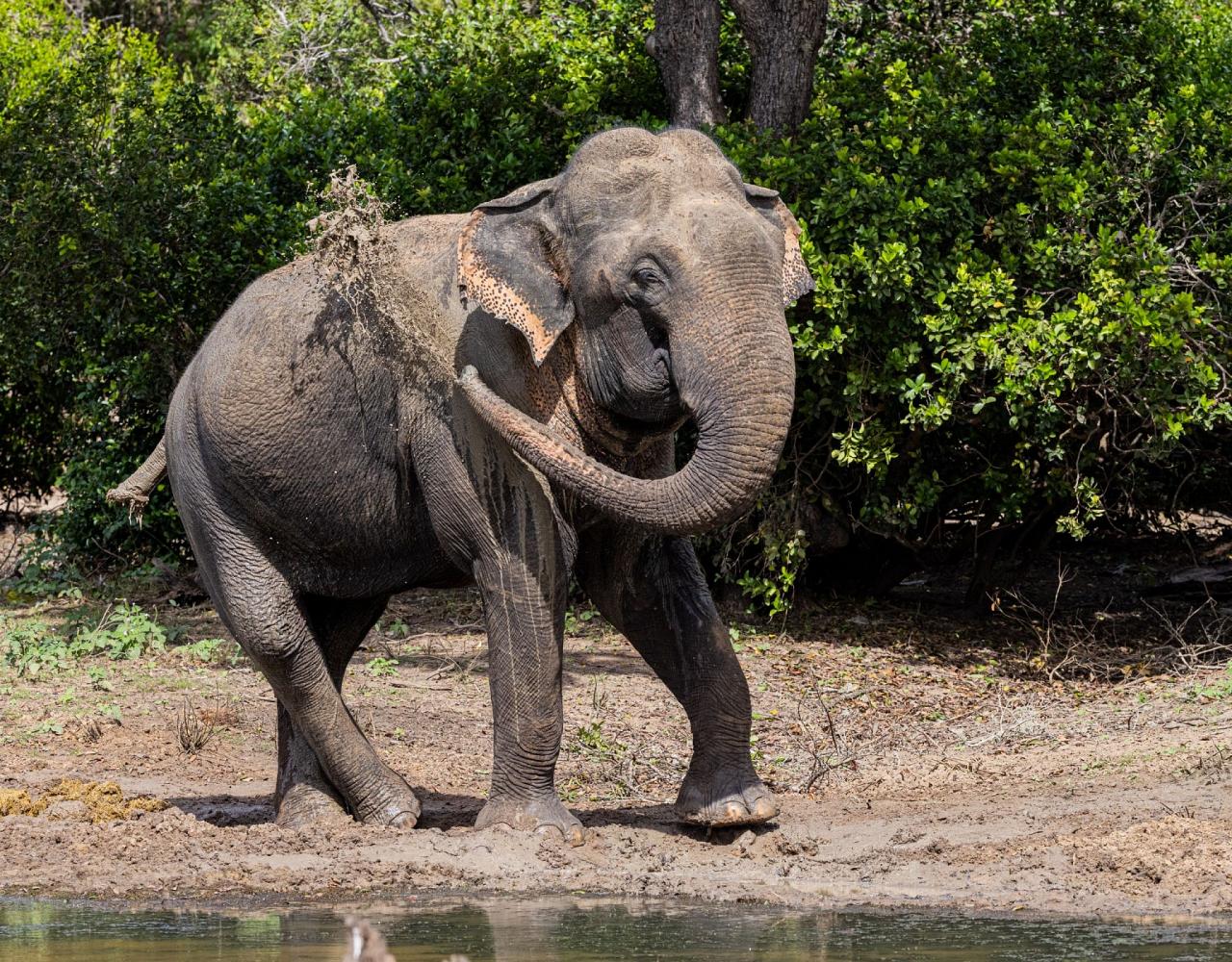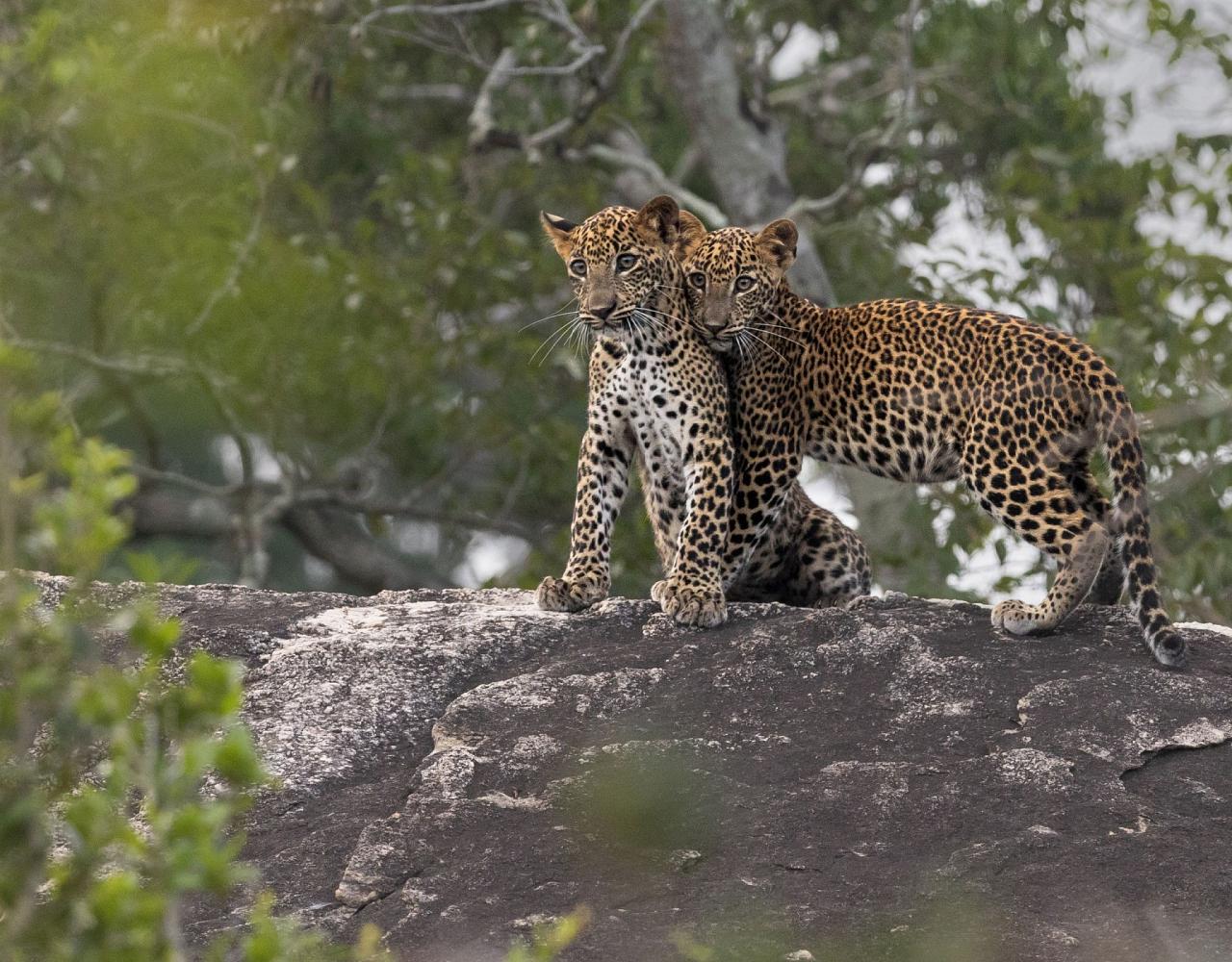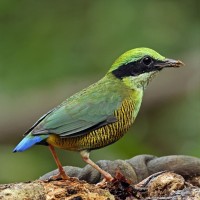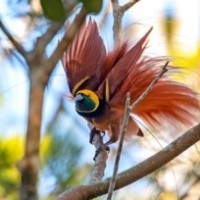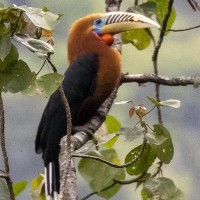- Overview
- Full Itinerary
- Extensions
- Photo Gallery
- Costing
- Travel Details
- Guide
- Know Before You Go
- Other Trips You May Like
At only 270 miles long and 150 miles wide, Sri Lanka packs a lot into such a small area. Beautiful coasts, montane cloud forests, endless plains, and lush rainforests make this country a dream birding spot and a great choice to sample a host of Asian birds. As a biodiversity hotspot with over 430 recorded species, 34 of which are endemic, this is a country worth visiting! Naturalist Journeys is pleased to announce this NEW! exciting Sri Lanka nature tour to see unique birds, large mammals, and stunning scenery as we explore the island’s highlights.
Often called the pearl of the Indian Ocean, Sri Lanka lies just below India, separated by the narrow Palk Strait. Its rich biodiversity is owed, in part, to the varied climate and topography that occur within the wide range of habitats. We explore many of these habitats on our journey that focuses in on the top locations. Learn about conservation measures being taken to buffer impacts of climate change and shore up chances for threatened and endangered species to survive. Sri Lanka and the Southern Ghat Mountains of Southern India are being closely watched by scientists as many of the specialty species inhabit at risk montane forests. Our visit helps motivate communities to fight deforestation and habitat degradation.
We first visit the lowland rainforests of Kitulgala, where the endemic Serendib Scops Owl was recently discovered. Next, we journey to the central highlands of Sri Lanka and spend time in Nuwara Eliya and the beautiful Horton Plains National Park. Heading south, we travel back to the lowlands and enjoy several days of exploration in Bundala and Yala National Parks where we hope to see Sri Lankan Leopard, elephant, and many colorful bird species. We stop in Udawalawe National Park to see large herds of Asian Elephant and end our trip in the endemic rich Sinharaja Forest Reserve.
In addition to learning about the wonderful birds, mammals, and landscapes here, we also learn about the diverse culture in Sri Lanka, it’s ancient history rich in stories and tradition, all while sampling delicious local cuisine.
To maximize your time in Sri Lanka, join our pre-extension tour to the northern part of the country! Experience beautiful Mannar Island and its turquoise waters, white sandy beaches, and diverse bird life. Countless migrant waterbirds, ducks, and waders along with gulls, terns, and a few seabird species make this area a birding hotspot. We also visit Wilpattu National Park, the largest national park in the country and one of the best locations for finding both Sloth Bear and Sri Lankan Leopard. Along with over 200 species of birds and additional endemics, this park is definitely worth a visit!
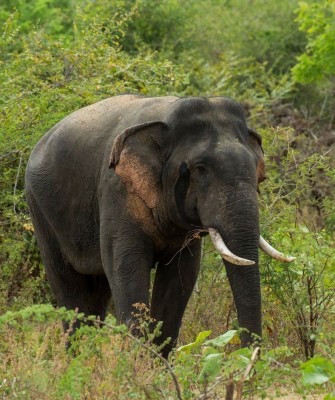
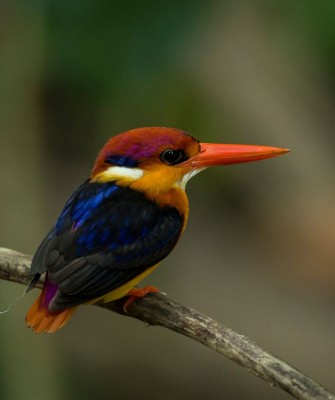
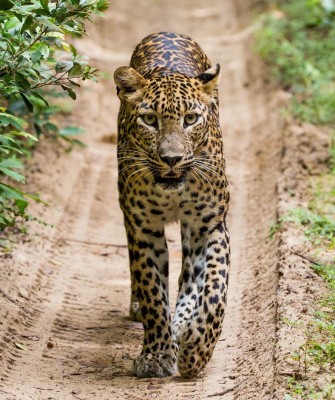
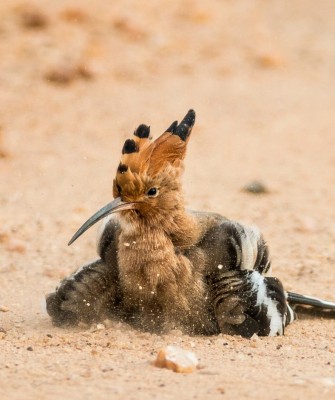
Tour Highlights
- Enjoy delicious Sri Lankan cuisine and discover the diverse culture of this small, but exquisite country
- Explore a wonderful part of Asia with a chance to see a good number of endemic species
- Spend two nights in the rainforests of Kitulgala, home to many lowland forest species including the recently discovered endemic Serendib Scops Owl
- Marvel over the beautiful scenery in the highlands of Horton Plains National Park, home to the endemic, Purple-faced Leaf Monkey and a host of bird species
- Enjoy four safaris in Yala National Park, one of the best spots in Sri Lanka to see Sri Lankan Leopard!
- Enjoy our carefully selected close-to-nature lodgings, spending two or three nights at almost all locations, each hosting great birding right on the grounds
- Experience Udawalawe National Park, known for its large herds of Asian Elephant and raptors such as Crested Serpent Eagle and Crested Hawk Eagle
- Visit one of the most revered birding areas in the country, Sinharaja Forest Reserve, home to 20 of Sri Lanka’s 34 endemic bird species
- Come early for our exciting pre-tour extension to Mannar Island and Wilpattu National Park! Mannar Island, only 19 miles from India, has spectacular wetland and coastal birding while Wilpattu National Park is the best place in the country to spot Sri Lankan Leopard and Sloth Bear
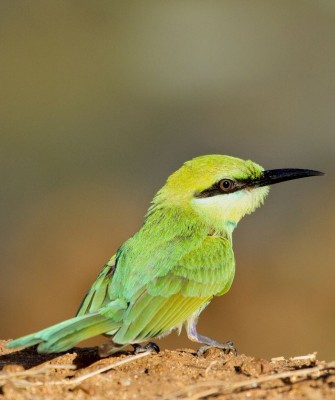
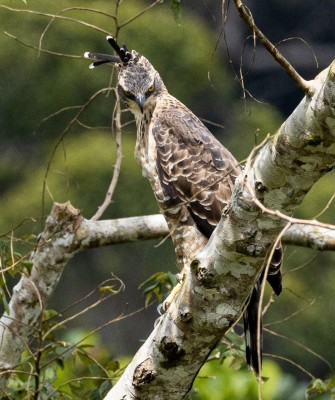
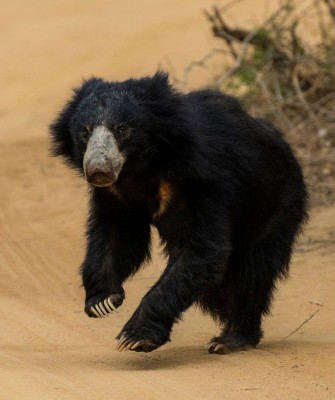
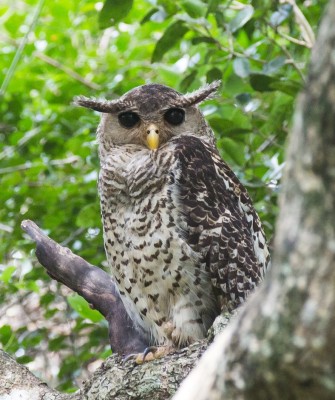
Trip Itinerary
Itineraries are guidelines; variations in itinerary may occur to account for weather, road conditions, closures, etc. and to maximize your experience.
Mon., Nov. 10 Arrivals in Katunayake
Welcome to Sri Lanka! Our journey begins in Katunayake, considered the gateway to Sri Lanka. Upon arrival at Colombo Bandaranaike International Airport (CMB), you are welcomed by our guide with the warm words of “Ayubowan”, which is the local form of greeting to guests, roughly translated to “may you attain a long life”. You are transferred to our nearby hotel, a lovely resort with twelve acres of lush gardens that are ideal for birding and a large, welcoming pool.
The rest of the day is at leisure, or if you are eager to get started on your Sri Lanka checklist, you can join our guide for some late afternoon birding on the resort property. This is a good introduction to Sri Lankan birds. The resort grounds are home to the endemic Crimson-fronted Barbet, a beautiful and often noisy bird with a very colorful head. We may also find Red-backed Flameback, White-throated Kingfisher, and Asian Koel.
Just ten minutes from the airport, the resort has a peaceful ambiance, with just 60 rooms. Tonight, enjoy your first of many wonderful meals at our welcome dinner to get to know our guide and fellow travelers and learn about our exciting journey ahead!
If you wish to arrive early to rest up from your travels and explore a bit, our partners in Sri Lanka can help you arrange that.
Accommodations at the Tamarind Tree Garden Resort (D)
Tues., Nov. 11 Kitulgala
After breakfast, we check out of the resort and begin our journey westward toward the lowland rainforest region of Kitulgala. If you have seen the Oscar winning film, Bridge on the River Kwai, you may recognize scenes from the movie, as parts of it were filmed here. Kitulgala is also loved by adventure enthusiasts for the white-water rafting on the wide Kelani River. Birders also flock here as, being one of the wettest areas in Sri Lanka with two monsoon seasons, it’s a fantastic location for some of the endemic species we hope to find. The Serendib Scops Owl, which was only discovered in 2001, was first recorded in these forests. Kitulgala is also a reliable location for an adorable endemic, the Chestnut-backed Owlet, which prefers this wet environment. Other endemics we hope to see in this area are the brightly colored but furtive Sri Lanka Blue Magpie, Orange-billed Babbler, and the Sri Lanka Hanging-Parrot, which, as its name suggests, is often seen hanging upside down from a tree branch. Several woodpeckers possible here include Lesser Yellownape, Brown-capped Pygmy Woodpecker, and Crimson-backed Flameback and we may spot Bar-winged Flycatcher Shrike.
We arrive in time for a delicious lunch at the hotel, which is perfectly situated in the forest on the Kelani River. The Plantation Hotel is located on a former coffee estate. Its eleven rooms have balconies so you can appreciate forest views and cool breezes. This carefully refurbished facility features colonial-era furnishings blended with modern amenities (yes, air-conditioning).
The brilliantly colored Black-backed Dwarf Kingfisher can be found in this area as well as the beautiful emerald green Jerdon’s Leafbird, Crimson-fronted Barbet, Brown-headed Barbet, Indian Pitta, and Indian Robin.
We return for dinner at our rainforest retreat, and time to tally up our sightings.
Accommodations at The Plantation Hotel (B,L,D)
Wed., Nov. 12 Kitulgala Birding Hotspots
Wake up to a lively chorus of birds, one the most common being Square-tailed Bulbul and one we are keen to hear and possibly see, Southern Hill Myna. We leave our hotel early with a packed breakfast in order to make the most of our time here. We explore a variety of areas and our expert guides determine the best location based on information from local spotters. The Kitulgala Forest Reserve is an excellent place to spot many of the sought-after lowland species such as Green-billed Coucal, Red-faced Malkoha, Sri Lanka Gray Hornbill, and Yellow-fronted Barbet, among other species. With luck we can spot Sri Lanka Spurfowl, most likely very early in the morning. There are numerous babblers and bulbuls to sort out; whether you are widely traveled or new to Asian birding, they are a delight.
Lunch is back at the hotel and we have time for a break to enjoy some relaxation. After lunch, take a quick refreshing dip if you wish in the hotel pool before we head out for some birding in the nearby forests. As time allows, you can walk around the grounds in search of Loten’s Sunbird visiting blooming hedgerows, along with Indian Robin, Common Tailorbird, and Black-hooded Oriole.
Later in the afternoon, we head back out in search of more endemic and resident Sri Lankan species. Around the village of Kitulgala there are numerous orchards and gardens with small forest patches, and these can be explored at a leisurely pace. This is a good area to listen and look for Sri Lanka Green Pigeon and Sri Lanka Hanging Parrot. If we hear drumming or a loud call, it may be Crimson-backed Flameback, a large and colorful member of the woodpecker clan. We could also see the fantastic Indian Paradise Flycatcher.
Then its back to our hotel to freshen up, enjoy dinner, and tally up our sightings.
Accommodations at The Plantation Hotel (B,L,D)
Thurs., Nov. 13 Nuwara Eliya | Victoria Gardens | Local Birding
This morning, we enjoy an early breakfast at the hotel and then pack up to head further west to Nuwara Eliya, about 2.5 hours away. Widespread species we may see in travel include Oriental Magpie Robin, Blue-tailed Bee-eater, Rose-ringed Parakeet, and Yellow-browed Bulbul.
Set in the hills of central Sri Lanka, the climate in this area is moist and cool; be prepared for some rain, which is why it’s so green! Founded in the mid 1800s as a retreat for British settlers, we likely notice many of the buildings in the city still retain their Tudor architecture from this period as well as traditional English gardens. This has inspired the nickname for the city, ‘Little England’.
The drive up is quite scenic as we pass luscious green tea fields and beautiful mountain vistas. If everyone is interested, we have the opportunity to stop at a working tea factory to taste and savor some of the world’s best tea.
We arrive in time for lunch and head to Victoria Park afterward. Named after Queen Victoria’s 60th jubilee, the park is a popular place to visit for both locals and tourists. Endemics we hope to find in this area include Dull-blue Flycatcher, Sri Lanka White-eye, and Yellow-eared Bulbul. Other interesting species in this area are the highly range-restricted Kashmir Flycatcher, Indian Blue Robin, the stunning Velvet-fronted Nuthatch, and the unmistakable Gray-headed Canary-Flycatcher.
We return to our lovely accommodations nestled between tea plantations and the mountains in the evening for dinner. The restaurant features international cuisine, plenty of sweets and yes, there is also a pub!
Accommodations at the Galway Heights Hotel (B,L,D)
Fri., Nov. 14 Nuwara Eliya | Horton Plains National Park
We have an early 5:00 AM departure for an exciting day at Horton Plains National Park! We take a packed breakfast and head south to arrive at the park by 6:00 AM. A UNESCO World Heritage Site, Horton Plains is one of the most picturesque and scenic national parks in Sri Lanka. Located over 2,000 meters above sea level, this montane cloud forest habitat is one of Sri Lanka’s ecologically rich areas with many species of endemic flora and fauna. Two of the three highest peaks in Sri Lanka, Kirigalpoththa, and Thotupola Kanda, are in the park. This is considered one of the most important drainage basins in the country and contains many pools and beautiful waterfalls.
After entering the park, we head down a windy road and stop at Arrenga Pool and other areas for some birding and photo opportunities. The misty background along with beautiful red rhododendron flowers and stunning mountain peaks in the background are ideal for photography.
The park is home to approximately 10 of Sri Lanka’s endemic birds and one of the most sought after, the endangered Sri Lanka Whistling Thrush, is one of our main goals for the day. Other endemics we hope to find are the Sri Lanka Bush Warbler, Sri Lanka Wood Pigeon, and the Sri Lanka Junglefowl. We also look for Indian Blackbird and Pied Bushchat.
Horton Plains is not only good for birds, but mammals as well. Numerous Sambar Deer, native to the Indian subcontinent, call the park home. We also keep an eye out for the dominant predator of the park, the Sri Lankan Leopard. Larger and bulkier than their lowland cousins, the population is considered vulnerable. Other mammals we hope to encounter are the shaggy coated “Bear Monkey”, which is the highland subspecies of the endemic Purple-faced Leaf Monkey, Giant Grizzled Squirrel, and a couple of mongoose species with the beautifully colored Stripe Necked Mongoose being a highlight.
By afternoon, we head down to the nearby town of Pattipola where we enjoy lunch. We return to the park in the afternoon to continue birding and exploring this natural montane habitat. After a full day in the field, we return to our comfortable accommodations for dinner and our evening checklist tally.
Accommodations at the Galway Heights Hotel (B,L,D)
Sat., Nov. 15 Tissamaharama | Deberewawa Wetlands
After breakfast, we say goodbye to the mountains of Nuwara Eliya and head down to the lowlands of Tissamaharama, located at the southern end of the island. This is our base for the next few days to explore Yala and Bundala National Parks and other birding locations in the dry lowlands. The drive today takes about four hours along scenic mountain roads that give us views of beautiful waterfalls. We stop at Welimada enroute, for some birding in the sub-montane region. Some possible species include Blue-tailed Bee-eater, Indian White-eye, and Yellow-billed Babbler. This area is also known to be a roosting ground for the Brown Wood Owl, an interesting resident owl species we might be lucky to find on a day roost.
In the afternoon, we arrive at our 40-room lodge for the next three nights, the Kithala Resort. The resort itself overlooks paddy fields and is a great spot for birding. We enjoy a delicious lunch here.
We settle into our rooms and, and later in the afternoon, head out to the Tissa and Deberewawa wetlands. These areas are superb for waterbird species including Black-headed Ibis, Indian Pond Heron, a chance for three bitterns: Cinnamon, Yellow, and Black, Gray-headed Swamphen, Watercock, and Spot-billed Pelican. Listen for Clamorous Reed Warbler as we scope various wading and shore birds that may include Greater Thick-knee, Tibetan Sandplover, Curlew Sandpiper, Common Redshank, and Black-tailed Godwit. Afterward, we explore some surrounding village areas where local spotters help us to find resident owls. Our hopes are high for seeing three species: the tiny Jungle Owlet, the bulky Brown Fish Owl, and Indian Scops Owl.
As dusk approaches, we head to the edge of Tissa Lake, which has large rain trees that are home to thousands of roosting Indian Flying Fox, which take off as darkness approaches, filling the sky. What a sight!
Accommodations at the Kithala Resort (B,L,D)
Sun., Nov. 16 Tissamaharama | Bundala & Yala National Parks
We have an early departure at 5:00 AM to head out in safari jeeps for an exciting morning in Bundala National Park! This national park stands out as a premier birding destination, renowned for its rich avian diversity and stunning natural landscapes. This coastal sanctuary encompasses wetlands, lagoons, salt pans, and scrublands that provide habitat for over 200 species of birds, making it a haven for bird enthusiasts and wildlife photographers alike. Designated the first Ramsar site in Sri Lanka in 1991 and a national park in 1993, this park is considered an internationally important wintering ground for migratory water birds.
During the migratory season from October to March, the wetland habitat in the park boasts a variety of waterbirds. Large flocks of flamingoes gather here in winter, and we may see some early migrants. They gather in the shallow waters alongside resident species like Painted Stork, pelicans, and various species of herons and egrets. The mix of freshwater and saltwater habitats also supports an array of ducks, waders, and terns, adding to the park's biodiversity. In addition to a plethora of waterbirds, the park is home to a number of endemic species including Red-backed Flameback, Crimson-fronted Barbet, Sri Lanka Woodshrike, and Brown-capped Babbler. Strikingly beautiful and acrobatic is the Asian Green Bee-eater.
We return to the hotel mid-day to enjoy lunch and a break from the sun. Enjoy a swim in the pool or some time to relax.
In the afternoon, we head to Yala National Park, the second largest in Sri Lanka at 377 square miles. Designated in 1938, it is also one of the oldest national parks in the country. The park has a complicated history as it was once a popular hunting ground for the British elite in the 1800s, but now boasts healthy populations of mammals, including the Sri Lankan Leopard. Today, the park has one of the densest leopard populations of anywhere in the world. Do expect some crowds, this is a very popular destination, but our knowledgeable guides know how to navigate to keep us engaged with nature.
Bird species are similar to Bundala National Park, but the addition of large megafauna makes it one of the most popular national parks in the country. Other than leopards, we hope to see Sri Lankan Elephant, Sloth Bear, Wild Asiatic Water Buffalo, and Golden Jackal.
We keep our eyes peeled for the endemic Sri Lanka Green Pigeon and Black-capped Bulbul as well as brightly colored bee-eaters like Asian Green and Blue-tailed. Asian Openbill, Indian Pond Heron, Red-wattled Lapwing, and a variety of heron species are likely to be spotted in the wetland areas of the park.
After a full day, we exit the park in time for a delectable dinner at the resort where we enjoy expansive views from the dining area.
Accommodations at the Kithala Resort (B,L,D)
Mon., Nov. 17 Yala National Park
This morning, we start early for a 6:00 AM game drive in Yala National Park to continue exploring for exciting bird and mammal sightings. We return to the hotel late morning for lunch and a break before an afternoon game drive in a different part of the park. During our afternoon game drive, we visit Sithulpawwa Rajamaha Viharaya, an ancient Buddhist monastery built around 200 BC. It sits on a rocky outcrop among the lush forest and remains an important Buddhist pilgrimage site in Sri Lanka.
Yala is designated as an Important Bird Area with 215 species and six endemic birds. It has extensive wetlands, home to Painted Stork, Lesser Adjutant, Asian Openbill, and Black-necked Stork among a host of other water-associated species. The woodlands are diverse and we plan our time according to what we still hope to see—birds, mammals, reptiles, butterflies, and more!
After an exhilarating day in Yala National Park, we visit Kataragama on the way back to our resort. This town is a melting pot for many faiths including Hindu, Buddhist, and Muslim. The temple and shrines are managed by the Buddhists, but it is one of the few religious sites in the country that is revered by multiple faiths.
We return to the hotel restaurant, which prides itself on fresh, local produce, herbs, and spices utilized in its international menu.
Accommodations at the Kithala Resort (B,L,D)
Tues., Nov. 18 Yala National Park | Udawalawe National Park
We have one last morning game drive in Yala National Park before returning to the hotel mid-morning to pack up and head to our next location, Udawalawe National Park, which some say provides the top safari in the country, being less-visited and more tranquil.
We arrive at Udawalawe in time for a delightful lunch at a local farm. In the afternoon we head out for a game drive in the national park, which is an excellent location known for its large herds of elephants as well as a stopover for winter migrants. Birds we may see in the park include the endemic Sir Lanka Gray Hornbill, Indian Pitta, Indian Robin, and Orange-breasted Green Pigeon. Jacobin Cuckoo, Sirkeer Malkoha, Blue-faced Malkoha, White-browed Fantail, and Plum-headed Parakeet are possible to see. We keep an eye out for the elusive Jungle Cat, which is occasionally seen in this park. Other mammals that call this park home include the Indian Grey Mongoose, Ruddy Mongoose, Sri Lankan Leopard, and Spotted Deer.
We return to our hotel right adjacent to the park, which has gardens, a pool, and scenic views overlooking the park. Enjoy a lovely dinner and a chance to add all the day’s sightings to our growing species list.
Accommodations at the Centauria Wild Hotel (B,L,D)
Wed., Nov. 19 Morning Game Drive Udawalawe NP | Sinharaja World Heritage Site
We have an early morning game drive in Udawalawe National Park before we pack up and head toward the lowland rainforests and the UNESCO World Heritage Site of Sinharaja Forest Reserve, located in the southwest part of the country. One of the last remaining areas of primary rainforest in the country, many of the trees in the reserve are considered endemic or rare. This is also undoubtedly the best spot in the country for endemic birds as 20 of Sri Lanka’s 34 endemic bird species have been recorded here.
The drive to Sinharaja takes approximately 2.5 hours and we arrive in time for lunch at our accommodations for the next three nights. Set in the rainforest, close to the entrance of the forest reserve, it is the perfect base for exploring this bird-rich area. In the gardens and property edges we may find Jerden’s Leafbird, Black-throated Munia, and Sri Lanka Crested Drongo. We have a second chance at the dazzling Sri Lanka Blue Magpie here as well.
In the afternoon, we make our first trip into the reserve. We explore the beautiful, forested trails to look for the elusive Sri Lanka Spurfowl, usually found in pairs moving secretively along the forest floor. The rare and spectacular Red-faced Malkoha can be found in these forests, although typically tricky to see. Green-billed Coucal is another rare endemic that is often shy and hard to see, as is the Sri Lanka Thrush. With luck and two full days to explore, we hopefully find most of the endemics in this area along with other wonderful species such as Malabar Trogon, Sri Lanka Frogmouth, Orange-billed Babbler, and Indian Pitta that call this forest home.
At dusk, we return to our cozy bungalows for a deliciously prepared dinner.
Accommodations at Jansens Bungalows (B,L,D)
Thurs., Nov. 20 & Fri., Nov. 21 Sinharaja Forest Reserve
We awaken to birds singing outside our bungalows. The next two days are for exploring Sinharaja Forest Reserve, surrounding forests, home gardens in the village, and jungle trails.
In addition to endemic species, such as Sri Lanka Myna, we may find the beautiful Purple Sunbird, Indian Peafowl, Black-headed Cuckooshrike, Shikra, and Brown Shrike. These forests are also home to a variety of mammals that we hope to see. Giant Grizzled Squirrel, with bushy tails often longer than their bodies, they can be seen here along with endemic Flame-striped Jungle Squirrel and endemic Purple-faced Leaf Monkey.
We make the most of our final day, and in the evening, share highlights and favorite species after a festive, farewell dinner.
Accommodations at Jansens Bungalows (B,L,D)
Sat., Nov. 22 Departures
After breakfast, we head back to Katunayake for our departures home. We have a 3-hour drive and expect to arrive at the airport around 3:00 PM. Many international flights are overnight flights; please plan flights home for after 6:00 PM. If you need to stay on to fly out the next day, our partner in Sri Lanka can help make those reservations. (B,L)
Mannar Island Pre-Tour Extension
Itineraries are guidelines; variations in itinerary may occur to account for weather, road conditions, closures, etc. and to maximize your experience.
Wed., Nov. 5: Arrivals in Katunayake
Welcome to Sri Lanka! Our journey begins in Katunayake, considered the gateway to Sri Lanka. Upon arrival at Bandaranaike International Airport (BIA), you are welcomed by our guide and taken to our nearby hotel, a comfortable resort with lush grounds that are ideal for birding. The main journey also starts at this hotel, so if you wish to store anything, for this section of the trip you can travel light.
We meet for dinner this evening to enjoy a delicious local-style meal and meet our guide and fellow travelers.
Accommodations at the Tamarind Tree Garden Resort (D)
Thurs., Nov. 6 : Mannar
Today, after an early breakfast, we head north to Mannar, located on Mannar Island. Known for its sunny weather, turquoise water, and white sandy beaches, Mannar also has a fascinating history. It was once the center of the country’s pearl fishing industry and has previously been under Portuguese, Dutch, and British control. In more recent history, Mannar was the epicenter for the country’s civil war, which ended in 2009. Ancient baobab trees, thought to have been brought by Arabian traders centuries ago, are one of the many attractions on this fascinating island.
The drive takes approximately six hours but we make it a full and interesting day with plenty of birding and rest stops along the way. As this is your first peek at the country, you’ll enjoy the scenery, street life, lunch, and birds along the way. One of the wire birds may be the colorful Indian Roller! We reach the Palmyrah House, our lovely boutique hotel for the next two nights, in time to settle in and freshen up.
As bird activity resumes in the later afternoon, we head out to begin our exploration of this intriguing area. The tip of Mannar Island is only about 20 km from India, separated by the Palk Strait. Until the mid 1960s, a ferry ran between the two countries, making it easy to go back and forth. Considered a biodiversity hotspot, the 50-square-mile island provides important habitat for winter migratory birds, as it is located on the Central Asian Flyway. Mangroves, wetlands, and lagoons provide crucial stopover points for not only these migrating birds, but also resident species. We visit the Mannar Wetlands, which should be productive for Garganey, Eurasian Wigeon, Black-winged Stilt, Red-wattled Lapwing, Common Redshank, Painted Stork, acrobatic Asian Palm Swift flying overhead, and many others. By now the wintering species have arrived and activity should be high.
We return to our delightful hotel for a wonderfully fresh-prepared dinner.
Accommodations at the Palmyrah House (B,L,D)
Fri., Nov. 7 : Mannar
Awaken with a cup of Ceylon tea (or if you prefer, coffee) and perhaps spot a Gray-headed Swamphen or Indian Pond Heron on the hotel grounds, which total 35 acres and provide great bird habitat in wetland and paddy fields where we might see Stork-billed Kingfisher and other impressive species. After breakfast, we continue birding a variety of areas on Mannar Island.
We visit Vankalai Sanctuary, a protected area that covers approximately 12,000 acres and has over 150 bird species. Greater Flamingo can be seen here on the salt flats in large numbers in winter and we check for any early arrivals. The varied habitat in the sanctuary includes wetlands, salt marshes, mangroves, and grassland. Other areas we expect to bird today include Talaimannar and the Mannar Island Causeway.
Along the coast, we expect to see seabirds, gulls, and terns. We may see Whiskered Tern, Great-crested Tern, Saunders Tern, or Slender-billed Gull gliding above us. Lesser Noddy and Brown Noddy may be seen from shore.
Accommodations at the Palmyrah House (B,L,D)
Sat., Nov. 8 : Wilpattu National Park
This morning, we are off! There is much to explore. Enjoy breakfast in Mannar before packing up and heading south to Wilpattu National Park, which is the largest national park in the country at 500 square miles. Wilpattu, which translates to ‘Lake District’, is named for the unique, picturesque, saucer-shaped ‘villu’ wetlands throughout the park. It has a variety of habitats, from coastal to open plains to dry forest and contains denser forest cover than any other park in Sri Lanka. Protection of this park began in 1938 and continued until 1973 as more land was added. It was closed for nearly thirty years due to the civil war and only reopened to visitors in 2010.
The drive to the park takes approximately three hours and we arrive in time for lunch at our next lodge. This is a modern lodge set into the forest, with a lake (one of many in this region), a pool, and specialty dining. Our rooms have large windows to best appreciate views.
In the afternoon, we take a safari to explore this wonderful park! Famous for being one of the top spots in the country to see Sloth Bear and Sri Lankan Leopard, the park is also home to many other mammals and a wide variety of birds. Birding in the park is particularly good in winter with over 200 species recorded; Painted Stork are a sought-after species especially by photographers. We hope to see a variety of raptors in the park including Changeable Hawk Eagle, White-bellied Sea Eagle, and Brown Fish Owl. Endemic birds we may see are the Red-backed Flameback, Sri Lanka Gray Hornbill, and the Black-capped Bulbul. We should find a big Mugger Crocodile and the smaller but very quick and agile Monitor Lizard.
We exit the park gates by 6:00 PM (a park regulation) and it’s then time to head back to our resort, such a lovely oasis overlooking Thimbiri Wewa Lake, for a break to refresh and dinner. After dinner, we typically tally up our day’s sightings.
Accommodations at the Thimbiri Wewa Resort (B,L,D)
Sun., Nov. 9 : Wilpattu National Park
We leave the resort at 5:30 AM with a packed breakfast to maximize our time in the park. A full day of game drives should bring us exciting sightings in this vast park!
While Sloth Bear and Sri Lankan Leopard are the real stars here, we also hope to see Asian Elephant, Golden Jackal, and the dainty looking Sri Lankan White-spotted Chevrotain. Spotted Deer, one of the most common deer species in the country are often found in large herds in the park. Colorful birds are plentiful, too, including Sri Lanka Junglefowl, Indian Roller, Tickell’s Blue Flycatcher, Purple-rumped Sunbird, Chestnut-headed Bee-eater, Orange-breasted Green Pigeon, and so many more! Brown-headed Barbet are noisy and common here. Most impressive are the big Malabar Pied Hornbill, a show-stopper for all. The word Wilpattu refers to lakes, of which there are many, so we have a chance to pick up African Darter, Indian Pond Heron, and a host of wading and shore birds, including possible Great Thick-knee and Tibetan Sand Plover.
We enjoy a picnic lunch in the field and continue our search for so many fantastic bird and mammal species in the afternoon. By 6:00 PMwe head back to our resort for a delicious dinner and drinks to celebrate our incredible sightings.
Accommodations at the Thimbiri Wewa Resort (B,L,D)
Mon., Nov. 10 : Katunayake
This morning, we depart Wilpattu National Park and head back to Katunayake. The drive is approximately three and a half hours and we may make some birding stops along the way, based on what we still hope to find. Upon arrival, we have the remainder of the day to relax before meeting up with the rest of the group to start the main part of our journey.
Accommodations at the Tamarind Tree Garden Resort (B,L,D)
Cost of the Journey
Cost of the journey is per person, based on occupancy: $5390 DBL / $5990 SGL from Katunayake. The cost includes 12 nights’ accommodations; all meals as stated in the itinerary; ground transportation; professional guide services; park, preserve, and other activity fees; leech socks; and miscellaneous program expenses.
Cost of the extension is $2390 DBL / $2790 SGL.
Cost of the journey does not include airfare from your home to and from Katunayake, visa cost, or items of a personal nature, such as drinks from the bar, telephone, and local guide gratuities.
Travel Details
Please plan to make air travel plans only after the minimum group size has been met. We will send you a confirmation email as soon as the trip has been confirmed.
Arrival and Departure Airport: Colombo Bandaranaike International Airport (CMB) in Katunayake
Arrival Details: Please plan flights to arrive November 10, 2025, by 5:00 PM if you wish to join the group for dinner
Departure Details: Please plan flights to depart November 22, 2025, after 6:00 PM
Pre-extension Arrival Airport: Colombo Bandaranaike International Airport (CMB) in Katunayake
Pre-extension Arrival Details: Please plan flights to arrive November 5, 2025, by 5:00 PM if you wish to join the group for dinner
Travel Tips: If you arrive early to rest up from your travels or explore around Katunayake, we can book an early night for you at our first night tour hotel, the Tamarind Tree Resort. You can relax by the swimming pool, enjoy food and drinks at the on-site restaurant, or get an early start on your bird checklist by exploring the lush resort grounds. The resort can also arrange day tours to visit nearby cultural sites or the local beach.
-
Peg Abbott

Peg Abbott is the owner and lead guide of Naturalist Journeys, LLC. She has been designing, guiding, and organizing natural history tours for more than 25 years, working for the National Audubon Society and other organizations before launching Naturalist Journeys, LLC in 1998. Her work has taken her from Alaska to Africa and Argentina, as well as many other locations around the world. She has conducted research on several bird and mammal species and keeps a close interest in Yellowstone and Mexican wolf reintroduction projects. Her interests include all aspects of natural history and geology. After 20 years in and around the Yellowstone area, Peg relocated in 2003 to the birding mecca of Portal, AZ.
Photo credit: Carol Simon
Other trips with Peg Abbott
-
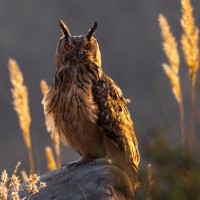 Wild Italy: Venice, the Dolomites, and Bologna CLOSED - Check out Romania & Bulgaria: Black Sea Coast Migration!May 18 - 30, 2025
Wild Italy: Venice, the Dolomites, and Bologna CLOSED - Check out Romania & Bulgaria: Black Sea Coast Migration!May 18 - 30, 2025 -
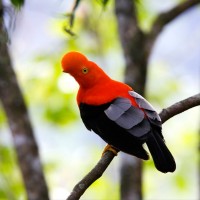 Incredible Ecuador: Chocó GaloreOctober 2 - 11, 2025
Incredible Ecuador: Chocó GaloreOctober 2 - 11, 2025 -
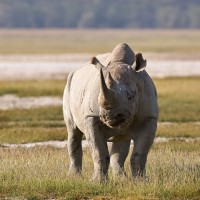 Tanzania: Wildlife & Birding Safari FULL - Check out Southern Tanzania in September 2025!February 9 - 22, 2026, w/Amboseli & Nairobi National Parks extension
Tanzania: Wildlife & Birding Safari FULL - Check out Southern Tanzania in September 2025!February 9 - 22, 2026, w/Amboseli & Nairobi National Parks extension -
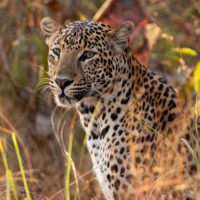 Big Cats & Breathtaking Birds of India FULL - Check out Southern India’s Western Ghats!March 9 - 26, 2026, w/Pallas's Cat extension
Big Cats & Breathtaking Birds of India FULL - Check out Southern India’s Western Ghats!March 9 - 26, 2026, w/Pallas's Cat extension -
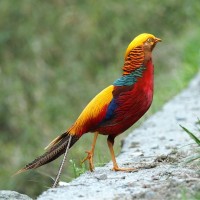 China’s Sichuan Basin & Tibetan Plateau Birding, Wildlife & CultureJune 11 - 26, 2026
China’s Sichuan Basin & Tibetan Plateau Birding, Wildlife & CultureJune 11 - 26, 2026
-
Essential Information +
Pace & Protocols +
Packing List +
Useful Links +
Photo credits coming soon.









